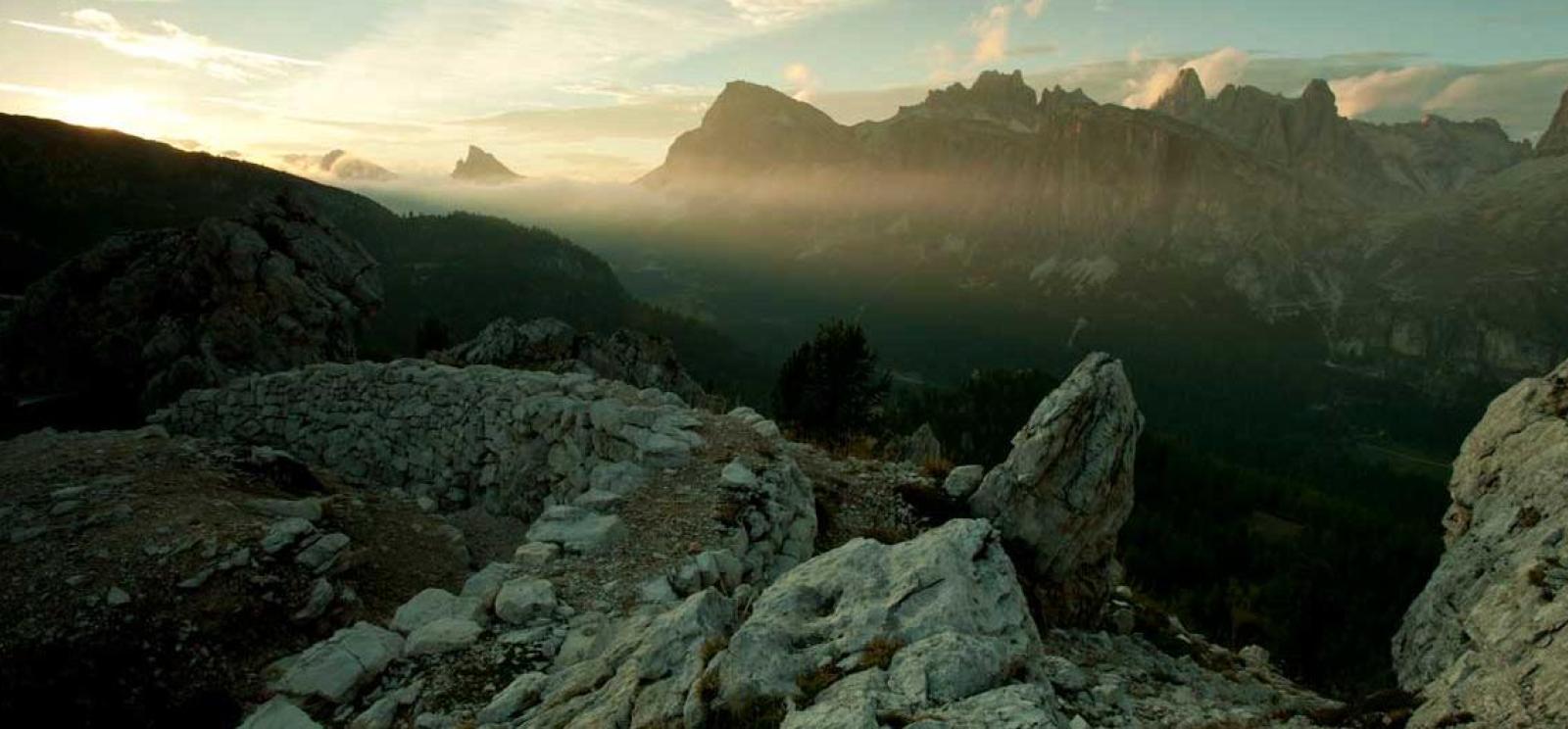This exciting tour studied the Italian Campaign and visited the British, Italian and American sectors of the Italian battlefields. Through a series of stunning walks and visits to remote spots in the region, travelers not only immersed themselves in the most spectacular scenery but also drew upon some of the most iconic memoirs of the Great War to tell the story of this forgotten front.
Museum Curator of Education Lora Vogt provided a day-to-day glimpse into the Museum's tour of the WWI Front in Italy.
DAY 1
Weather was a, if not the, deciding factor of the Italian campaign, 1915 to 1918. One hundred years later, with blue-sky sunshine and Mediterranean climate, our 2016 Battlefield Tour participants gathered from around the globe at noon today at the Venice airport to begin our own campaign to discover, commemorate and explore the Italian battlefront. If the weather is any predictor, we’re off to a beautiful start.
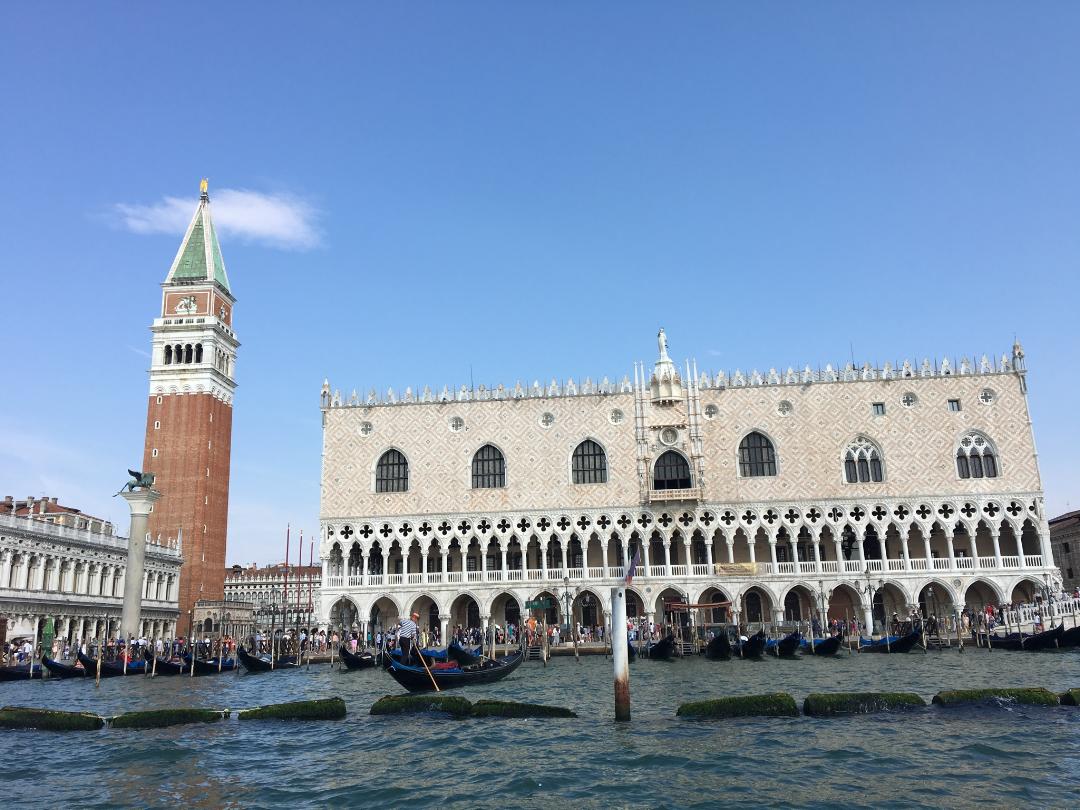
After a short drive across the flat plains towards the Altopiano di Asiago, we began at Montecchio Precalcino Cemetery (Commonwealth War Graves Commission). Amid the smell of English roses and in view of neighboring fields in grape harvest, battlefield guides Clive Harris, Director of Battle Honours, and Mike Sheil, author and curator of Fields of Battle, Lands of Peace 14-18, set the stage of Italy’s strategic importance.
By Italy remaining neutral in 1914, millions of men from South Asian British colonies traversed the Mediterranean, providing much needed man and munition support. Joining the Allied Powers in 1915, Italy forced Austria to split its armies, an action Germany tried to avoid. Over the next six days, we’ll travel deeper into the stories and geography of the Italian Campaign.
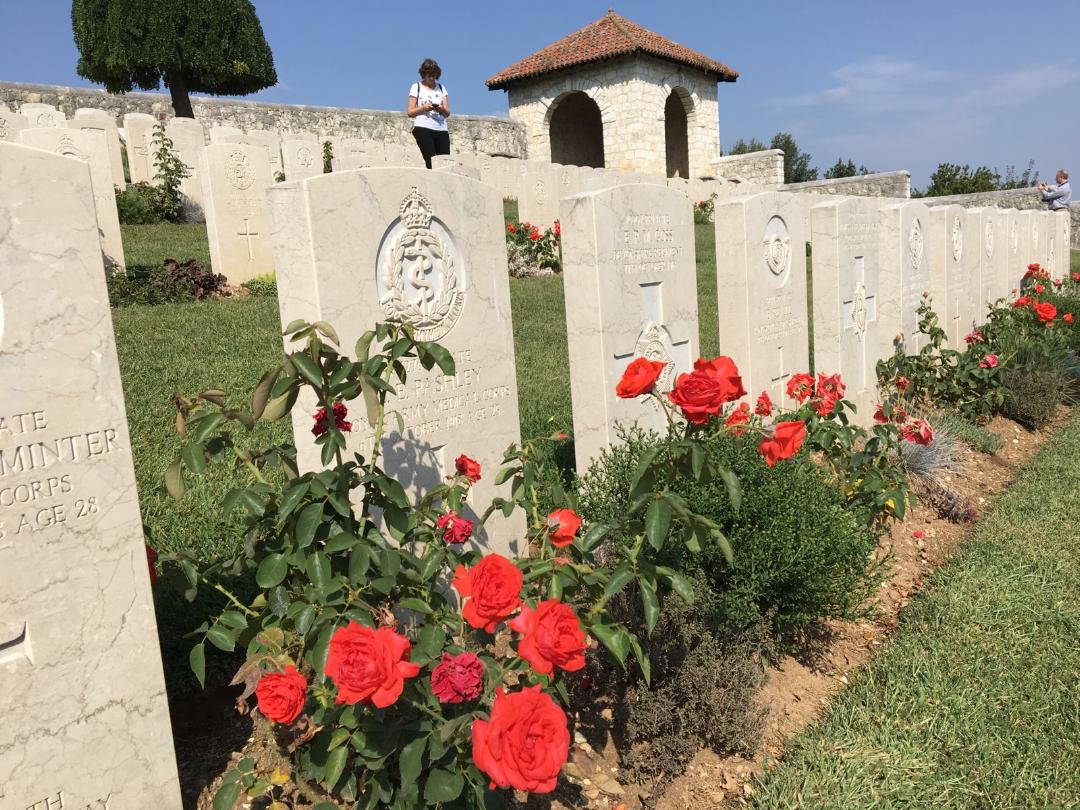
With sheer limestone cliffs and a bus-gasping incline, you might call Altopiano di Asiago “counterfeit mountains.” Italians just call them foothills. Moving on towards our hotel, we traversed the road (which follows that built by the military in WWI) around hairpin curves that make you appreciate Italian engineering and provided stunning views that in one glance illustrate how easily Venice, Milan and other essential cities would have easily fallen had defenses not succeed in and around Asiago.
With crisp, higher elevation air, we arrived at our lovely alpine hotel, Albergo Vescovi. With a dinner menu including fresh pastas, Prosecco and local venison — and outside of hearing distance but well within walking distance: a region-wide cheese and wine festival going on — it was a wonderful way to celebrate new and old friendships alike.
Day 2
Exploring the less familiar Italian WWI battlefront drives enthusiasm for learning and allows for great cups of coffee, made greater by late nights, fresh air and jet lag. Another crisp, clear sky greeted us this morning as we boarded our bus, now with driver Pierre Luigi (keen to help me improve my Italian) for a day exploring the woods and foothills of Asiago.
Our first stop: An Italian grocer so we each could pick up the makings needed for a picnic lunch. With an abundance of local cheeses and meats, the only challenge was deciding what to purchase before heading back to the bus.
We began our tour at Cavalletto Cemetery (CWGC). With karst soil, which creates sinkhole-like features filled with freshwater still used by dairy cows today, the cemetery was the site for an advanced operating station where urgent injuries from the front were treated. This was a comparatively quiet front for the war, outside of the Austrian attack in June of 1918. In France, five out of nine British military personnel became casualties; in Italy it was one casualty out of every 21 Britons. As such, this particular location was quite likely the closest British women, working as nurses in the military, were stationed near the front.

For the next few hours we traced the steps and listened to the words of those who experienced the terrain and the tragedy of the area: Tattenham Corner; Granezza Cemetery, the burial place of author Vera Brittain’s brother; plains and limestone shelters home to the British fighting forces; Barenthal Cemetery, where the unknown equally find a resting space.
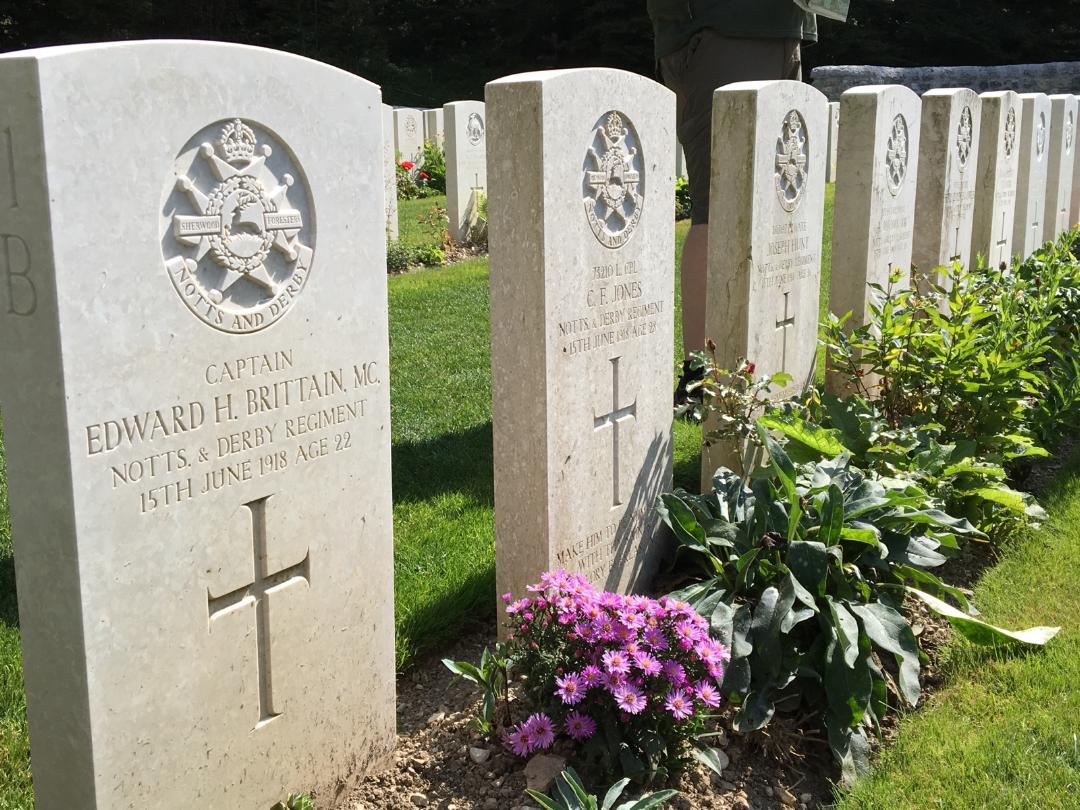
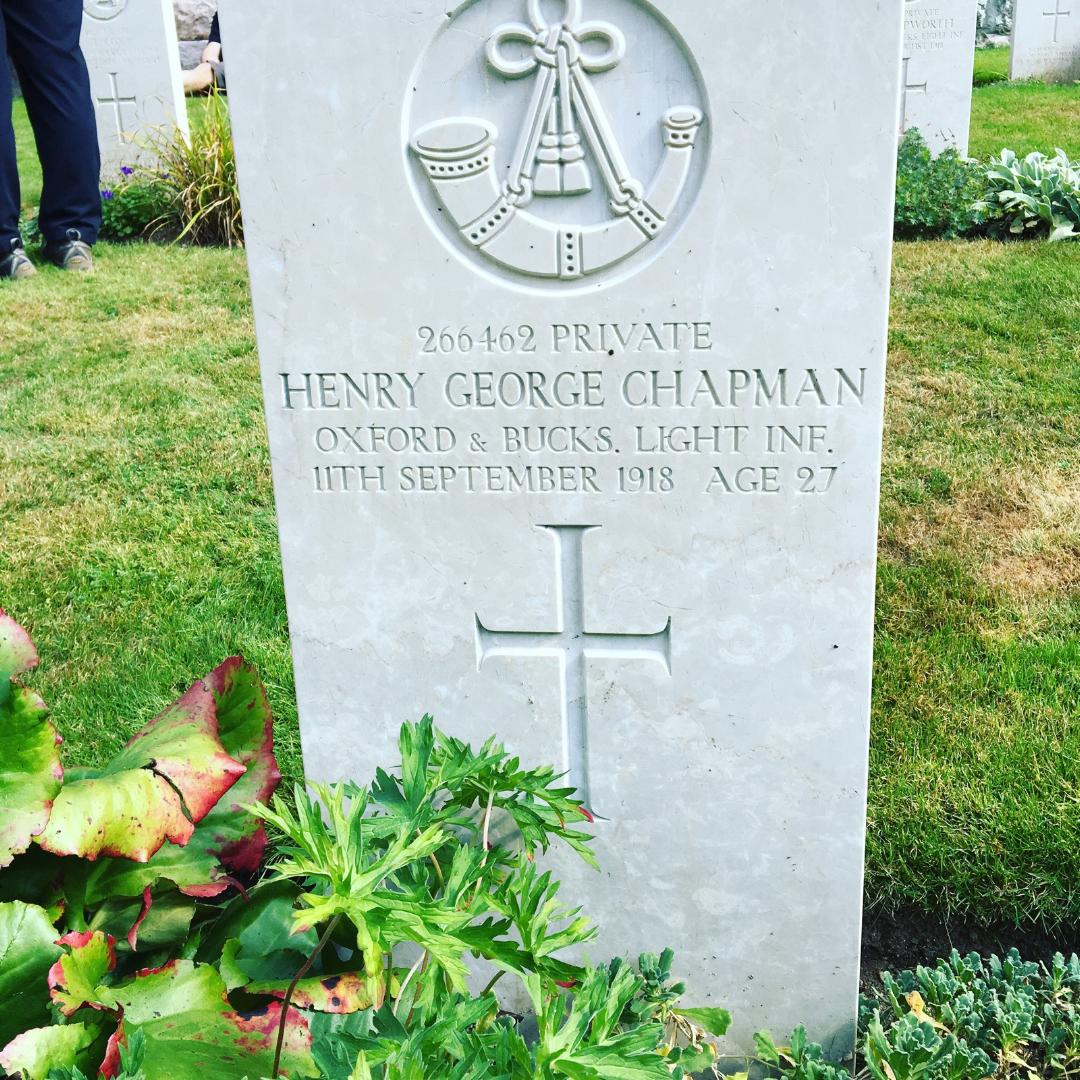
There is a beautiful collision between the diversity in natural and human geography here. Outcroppings of white limestone rocks covered in vibrant green moss look like they were rolled out like dice amid towering evergreens. Short, steep ski slopes drop onto rich plains with roaming, belled dairy cows that evoke a sense of Switzerland. In fact, Gabriele D’Annunzio described this area as the “little Switerland of Italy.” Its chalet-style architecture and tourist shops selling Tyrolean hats are intermixed with tourists enjoying Aperol spritzes and fresh polentas.
It is not only place but purpose that provided beautiful juxtaposition as we ended the day. Closing out our late afternoon, we leaned against nearly hundred-year-old trees and rested on stones of the clear-lined rear trench of the British, listening to readings of their well-organized action and bravery. And, as evening settled on the city, our hike back to the hotel took us down the British frontline, over paths with speedy mountain bikers and medieval churches, and 200 meters from our hotel door and backlit by a sunset, we stopped as Clive read the battalion order for two brigades to raid the village – with the direct geographic location of our family run hotel.
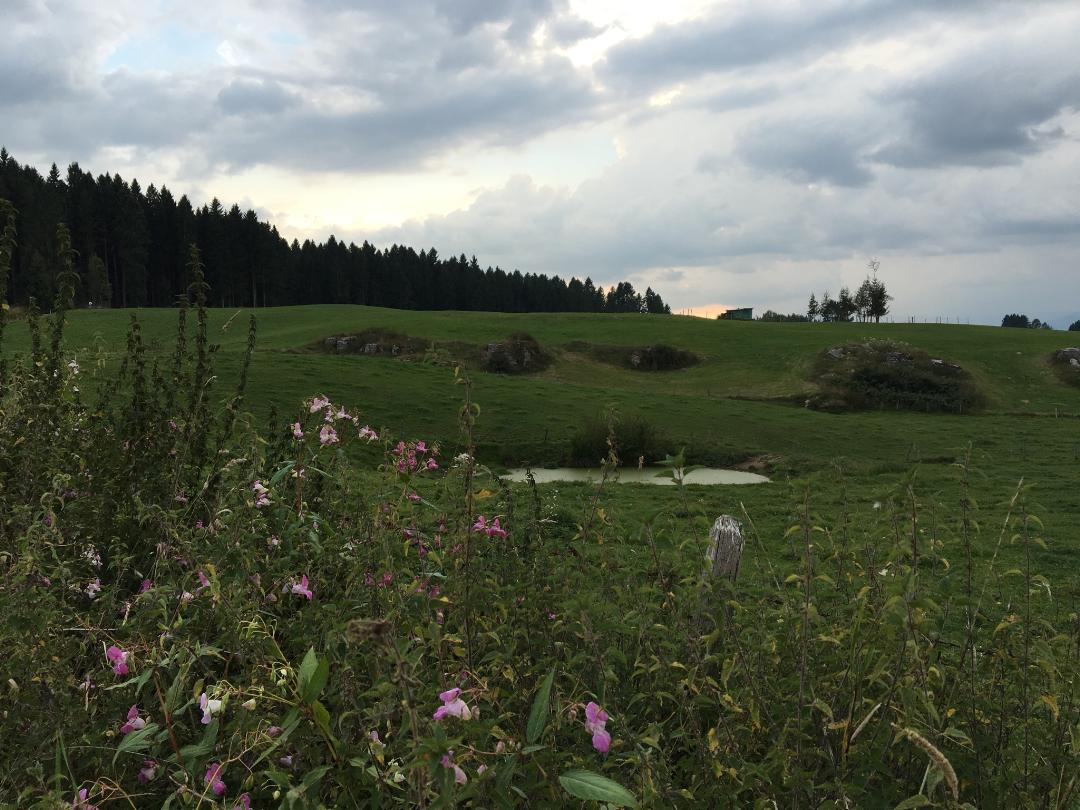
Day 3
"Where a goat can go, a man can go. And where a man can go, he can drag a gun."
— William Phillips, British Army Officer, 1777
Hiking hills and steep wooden paths, traversing trenches and crawling through observation posts, we explored the art of soldiering amid remnants of their activities 100 years earlier.
A quick trip to a local map shop in Asiago’s lovely town center preceded our tour of Museo della Grande Guerra, 1915-1918. Through work of volunteers to host a rich and eclectic private collection, both those new to WWI battlefield history and those passionate about it found something to enjoy.
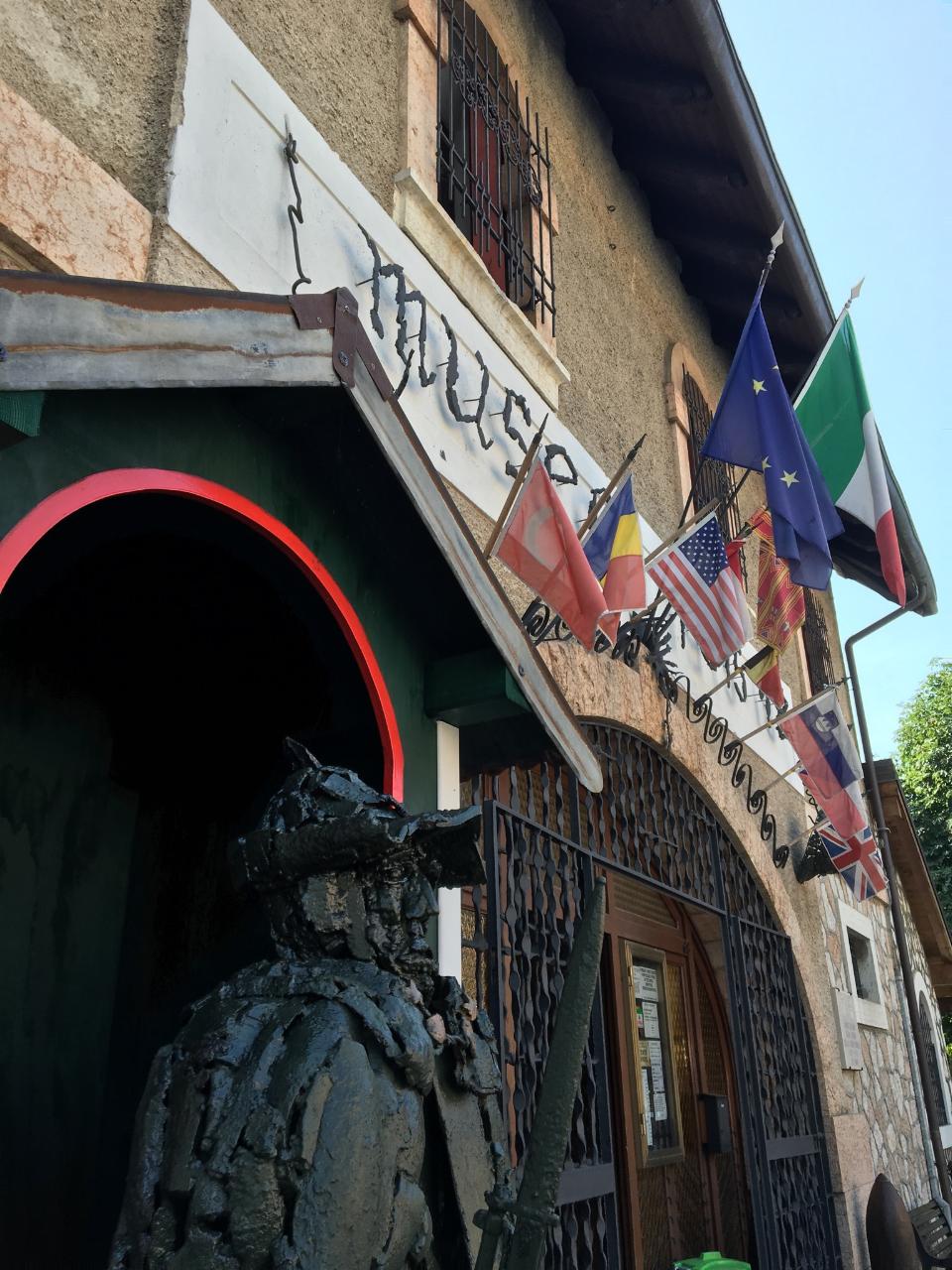
Afterwards, a short trek took us near the top of Monte Zevetto, once held by British 48th Div. That high in the air, particularly looking out through the observation post window, it is clear that accurate visual information is important.
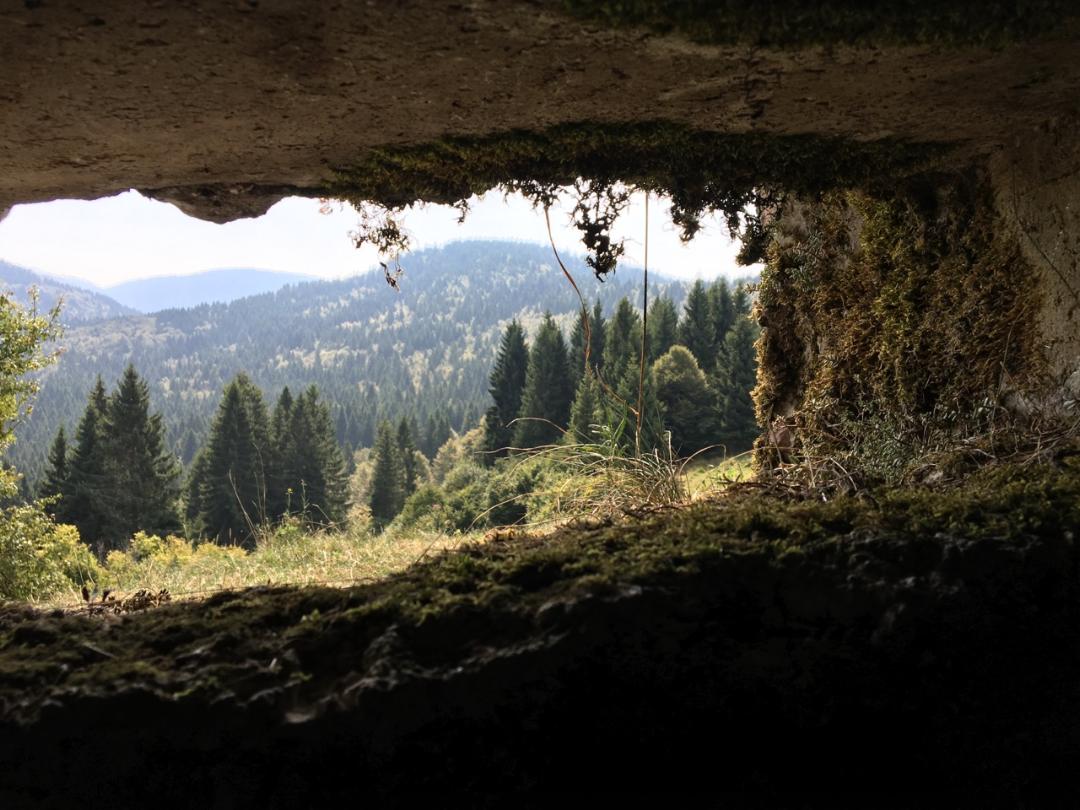
For modern memory, air war is the Royal Flying Corps, the Lafayette Escadrille and the Red Baron. In reality, over 80% of flying hours in WWI were spent in observation. Aerial combat began to defend map making aircraft, easy targets flying the consistent speeds and straight lines best-suited for map imaging. It was not dogfighters, but observation pilots that made the majority of the Red Baron’s “kills.” Air observation also included hot air balloons, across the Western Front, superior in many ways to planes. Balloons could have telephones with which to communicate to command centers on the ground; airplanes had one-way Morse code. In a hot air balloon basket, a team could spread out maps. Last (for this writing), but certainly not least – aircraft moving at high speeds in a horizontal have a difficult time accurately targeting a motionless aircraft that can move vertically.
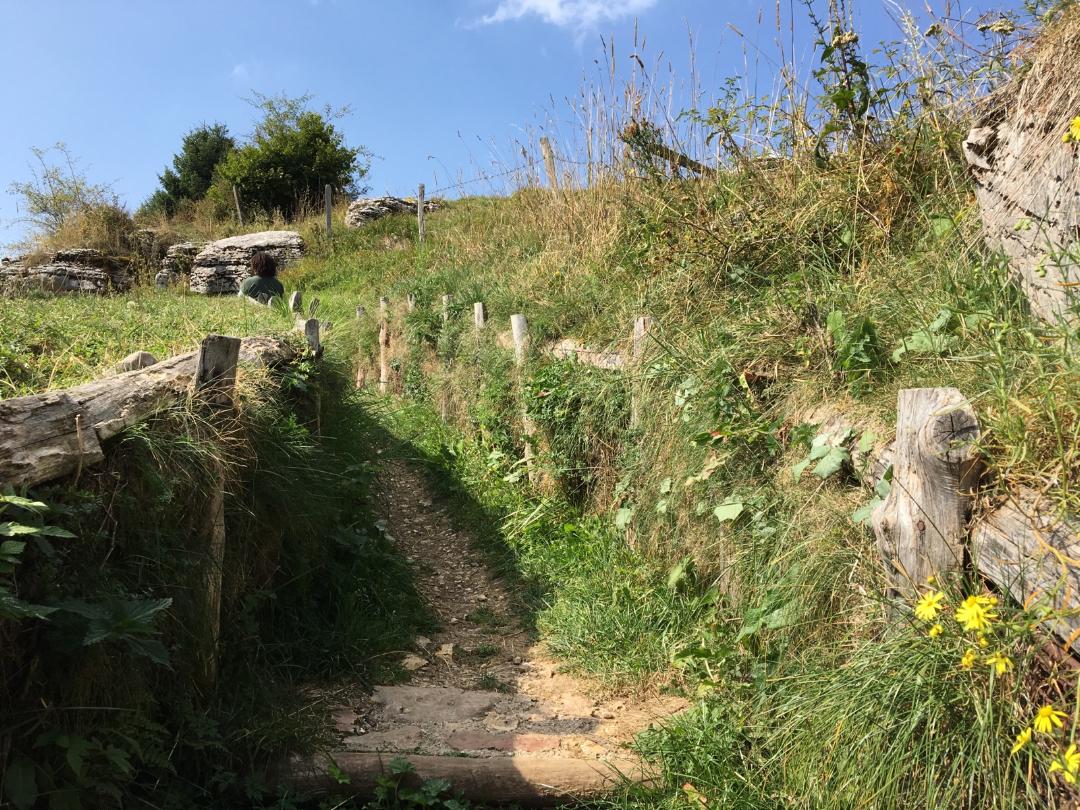
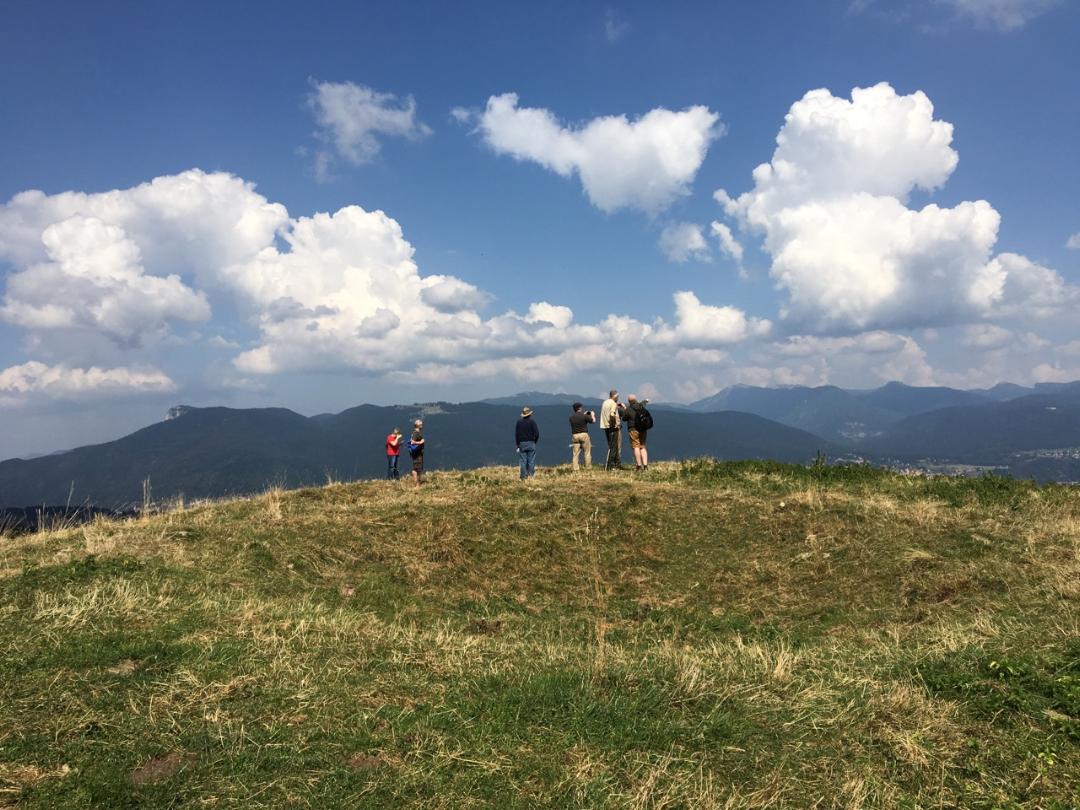
We went down the mountain to the original shared resting place of the Italian (Liguria, Trapani, Arno, Forli) and Austrian soldiers who fought at Lemerle and Zovetto, now interred in the Ossuary. Across the road is the Magnaboschi British Cemetery with the fallen from the British Expeditionary Force (Oxfordshire, Buckingshamshire, Northumberland Rifleman, Glouchester.)
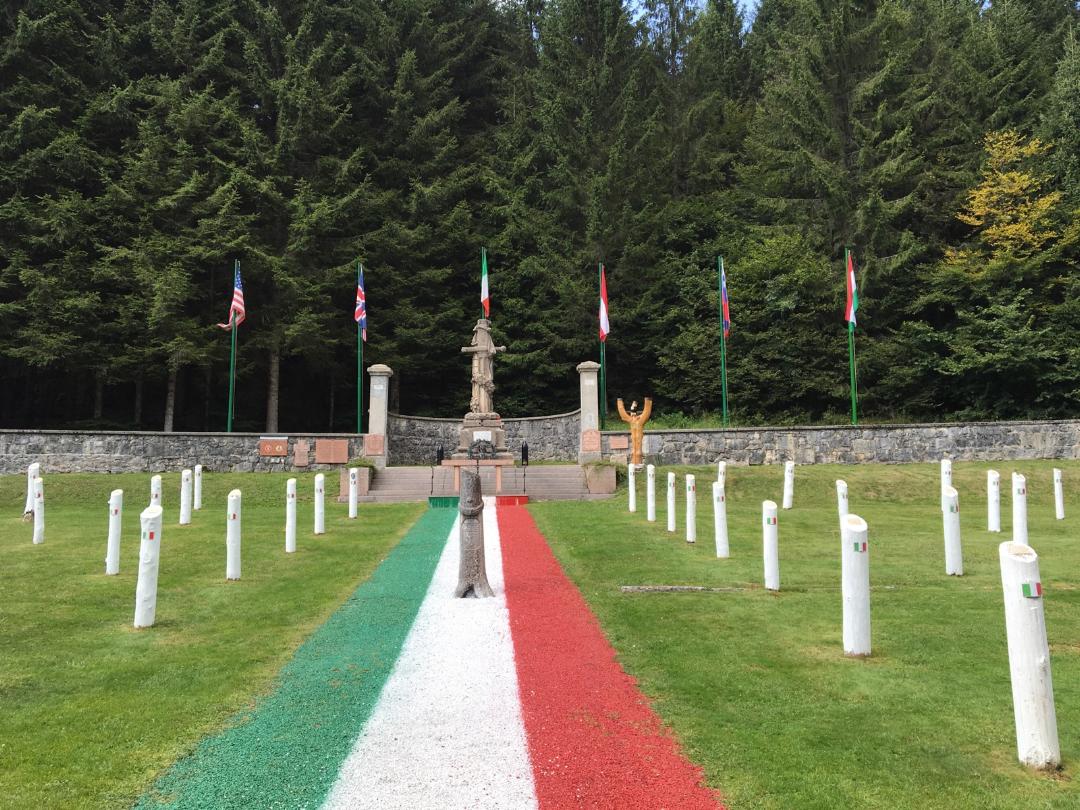
We climbed up through the Magnaboschi Valley up to the top of Monte Lemerle and sat beneath the evergreens on well-sized moss covered stones for a picnic among trenches, underground networks and machine gun posts. Then continued on to the Monte Lemerle Command Post.
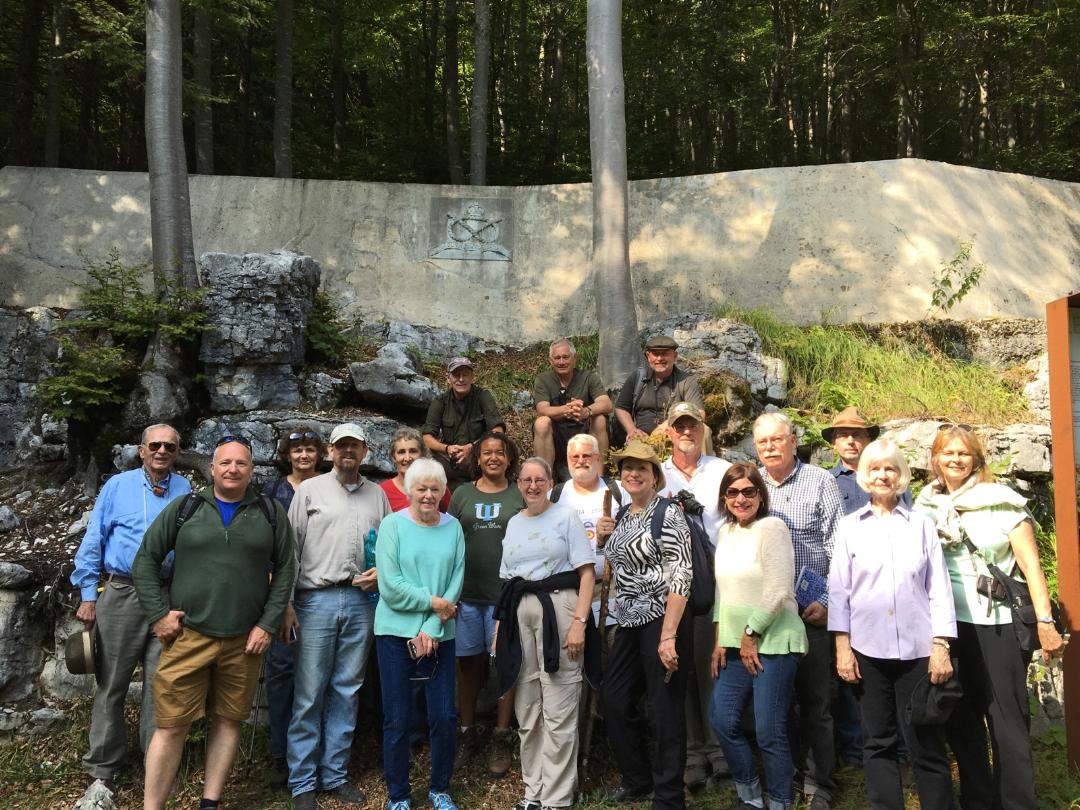
The strategy and tactical positions of troops and their supplies, as clearly seen at Handley Cross, an intersection of five roads where a beautiful field of wildflowers was once a 36-hour explosive fire of a well-targeted British ammunition dump.
Down the hill to Boscon British cemetery, we visited the grave of Philip Chutter whose final article in the school paper read:
“…it is hard to think that in [the] future some other boy will take your place in the school; that he, not you will keep goal for the school, and you get very little consolation out of the fact that perhaps he will occupy the seat at detention instead of you.”
A reminder of how articulate, funny and passionate the young men who fought may have been. When you remember one, you remember them all.
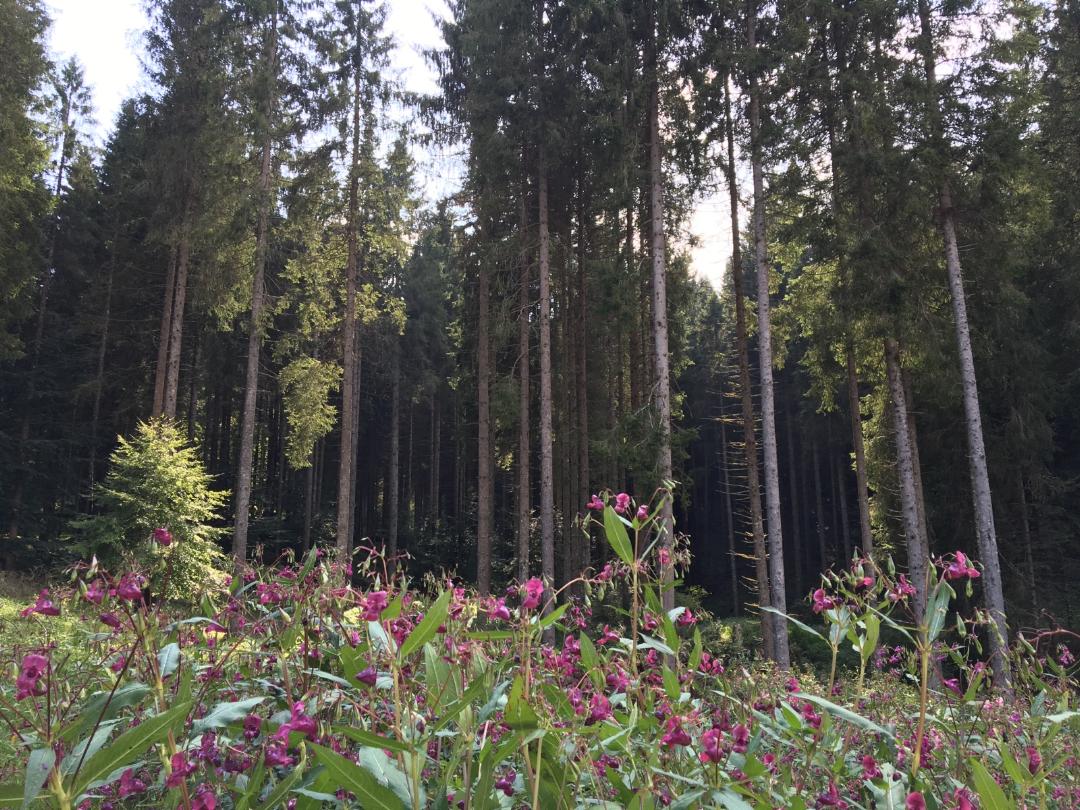
As we finished up the day – and before the delicious cake and coffee from Pierre Luigi’s family bakery, in business since 1909 – we stopped on a railway bridge, turned bicycle and recreation path, for a reading from a diary by Mike St Maur Sheil.
A moving day, indeed.
Day 4
We’ve left Asiago, headed to Piave di Cadore in our own form of creeping barrage – leap frogging from target to target: Sentiero della Pace (the Italian and Austrian Ossuary), Bassano del Grappa (a medieval town with an Alpini museum), Giavera del Montello (CWGC cemetery), the Piave River and an unknown target. Completed in 1938, Benito Mussolini exhumed the WWI remains of both Italian and Austrian soldiers to inter them in a monumental memorial to honor their sacrifice and enshrine the lasting alliance of two former enemies.
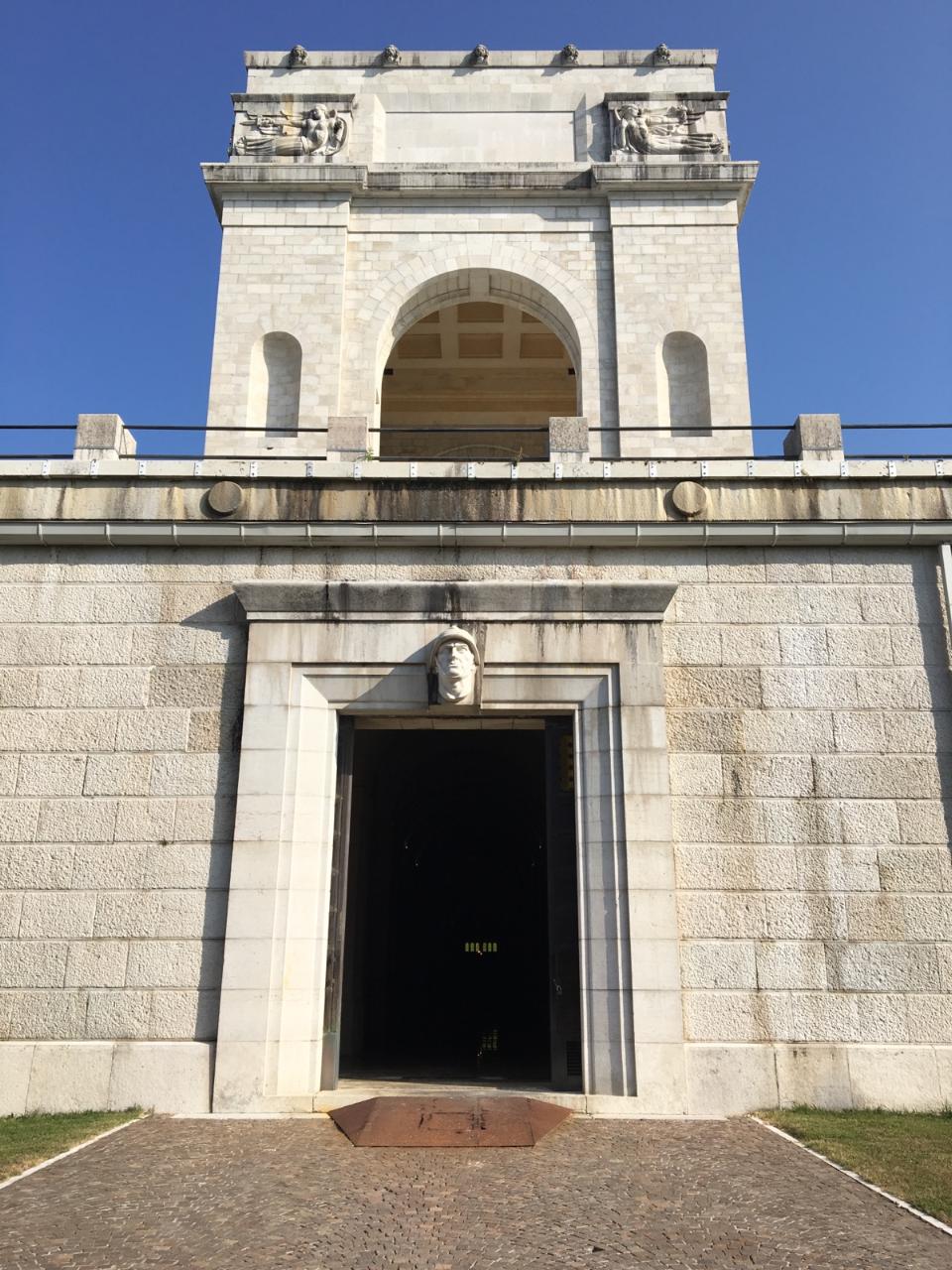
After driver Pierre Luigi’s seamless navigation of exacting hairpin turns, the group stopped for two hours to wander the city of Bassano to sip a caffé corretto, enjoy a panini or boutique and visit a charming Alpini Museo – the majority did the later and found it fascinating.
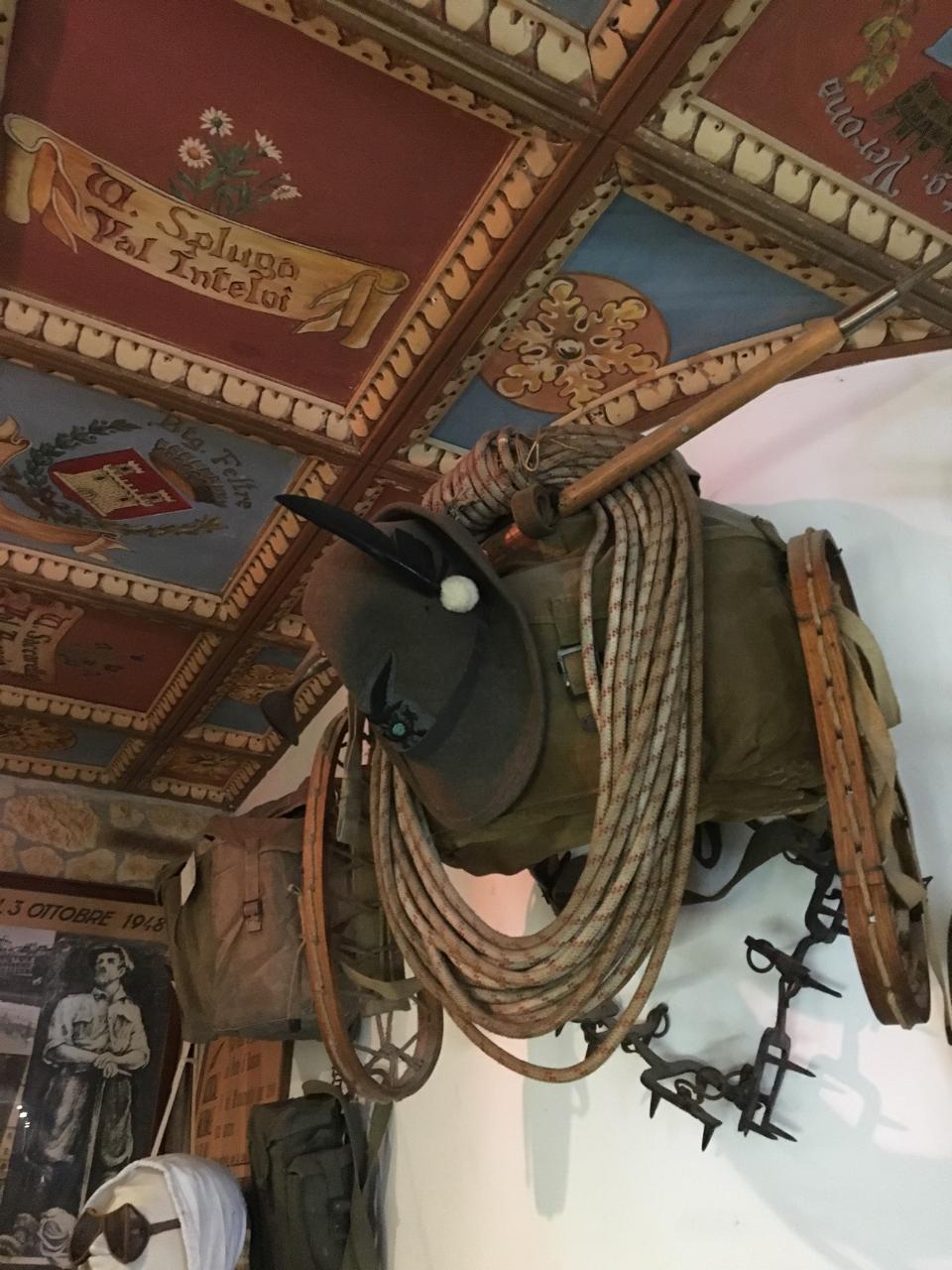
Killed Piave – July 8, 1918
By Ernest Hemingway
Desire and
All the sweet pulsing aches
And gentle hurtings
That were you,
Are gone into the sullen dark.
Now in the night you come unsmiling
To lie with me
A dull, cold, rigid bayonet
On my hot-swollen, throbbing soul
The Piave River exemplifies that geography, rather than heroism, can be the greatest factor in war. The last major offensive of the Austro-Hungarians in Italy, it was the fast flowing (up to 16 knots) and wide (over one mile across the flood plain) river that ultimately determined the battle.
A visit to the British cemetery at Giavera del Montello, with its monument to the missing, and to the banks of the Piave itself - with three monuments including one to the Italian engineers – provided a sense of sequence and scope of the action.
Want to learn more? Check out our friends at 1914-1918 Encyclopedia
In Italy, there was only one American action – by the 332nd Infantry Regiment. As our day ended, our expert battlefield guides struck out to find it, taking us past an Austrian pontoon boat memorial. Researching various sources, this is likely the largest American group to ever pilgrimage to the site.
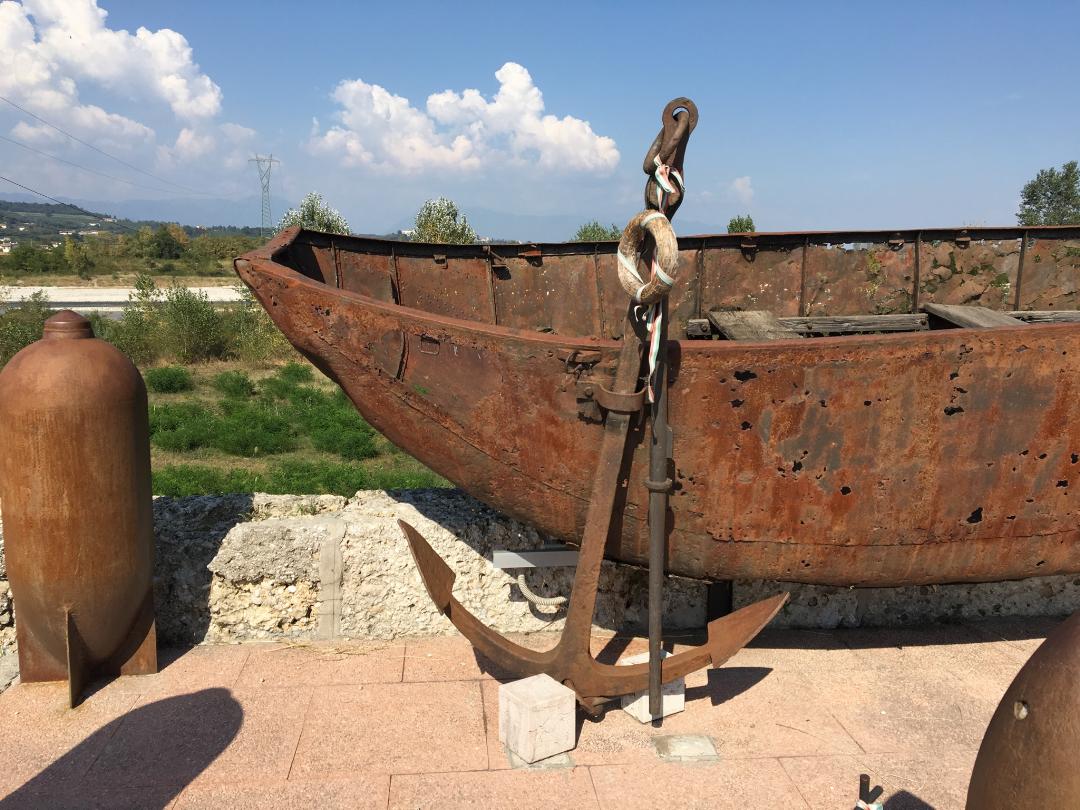
As evening started to set, we stood on firm ground surrounded by the walls of the Art Nouveau, artillery-shelled remains of the old bridge near a pigtail picket – clear evidence we were in the right spot. Museum Archivist and Edward Jones Research Center Manager Jonathan Casey read from sources within our archive – letters and a portion of a diary from action of November 4, the day of the Italian armistice. As he concluded (and previously unknown to us) one of our company breathlessly shared that though those readings were not from her uncle, they were from his company. Her uncle had fought on this very ground.
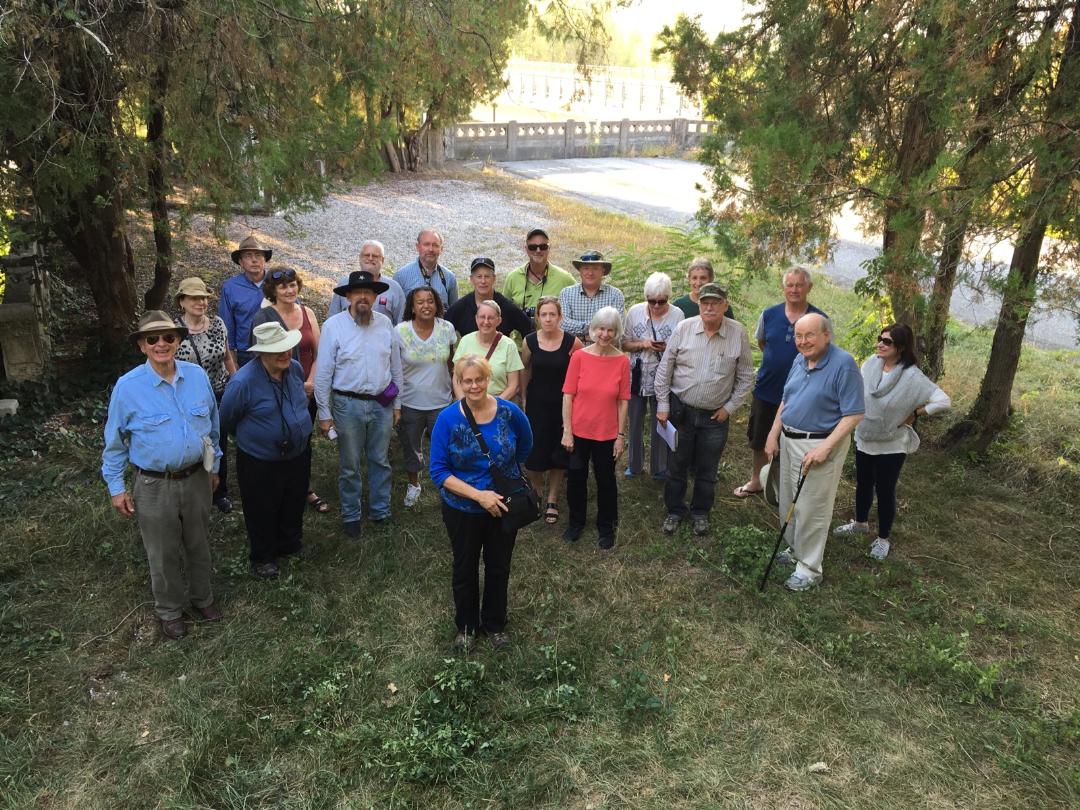
Day 5
The tortured terrain and battlefields of the Dolomites: nothing short of spectacular. The challenge writing this is the limited hours to process what my eyes have seen – and it has been tremendous.
We left our three gabled inn near Cortina d’ Ampezzo and traveled to Cinque Torri, via bus and ski lift, to visit the high altitude positions and open air exhibitions of the Italian front. From the Italian to the Austrian front, Lagazuoi, at 3218 meters (10,557 feet) elevation, takes your breath away. Back down the mountain, we explored the Austrian Fort Tre Sassi at the Valparola Pass with trenches cut into the limestone and an encampment still intact.
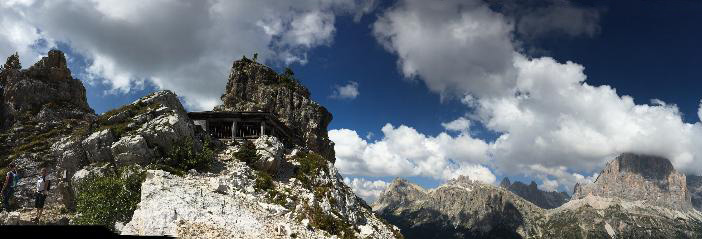
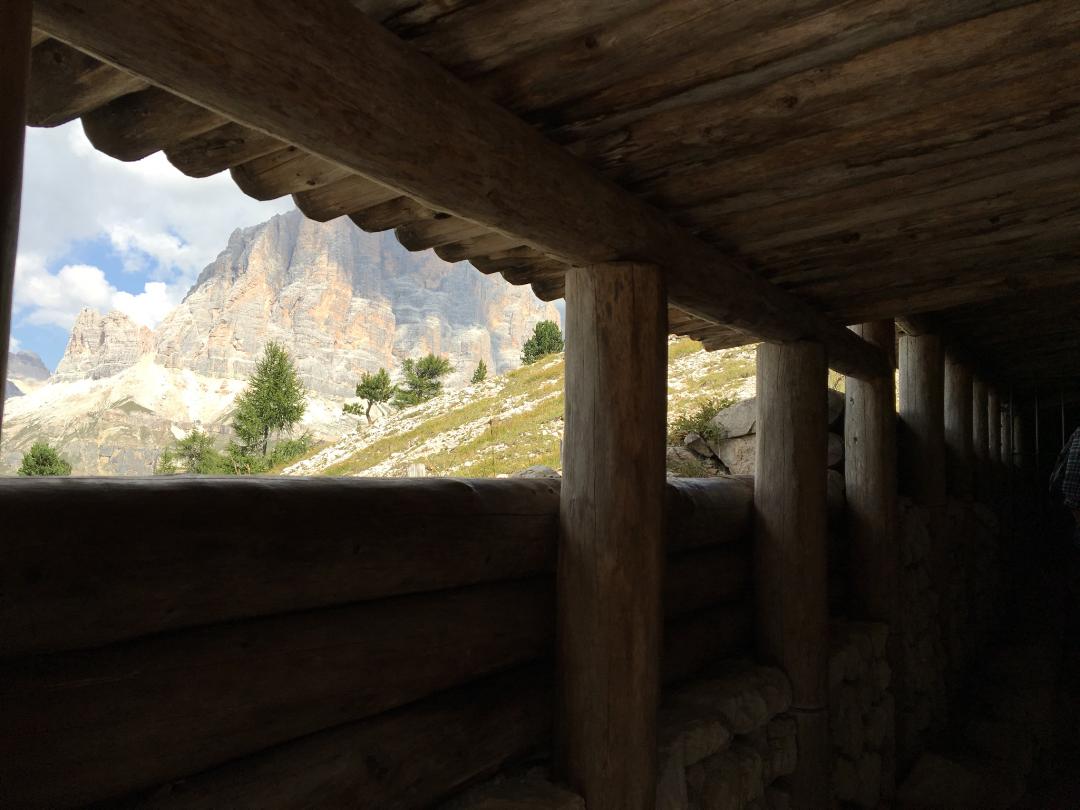
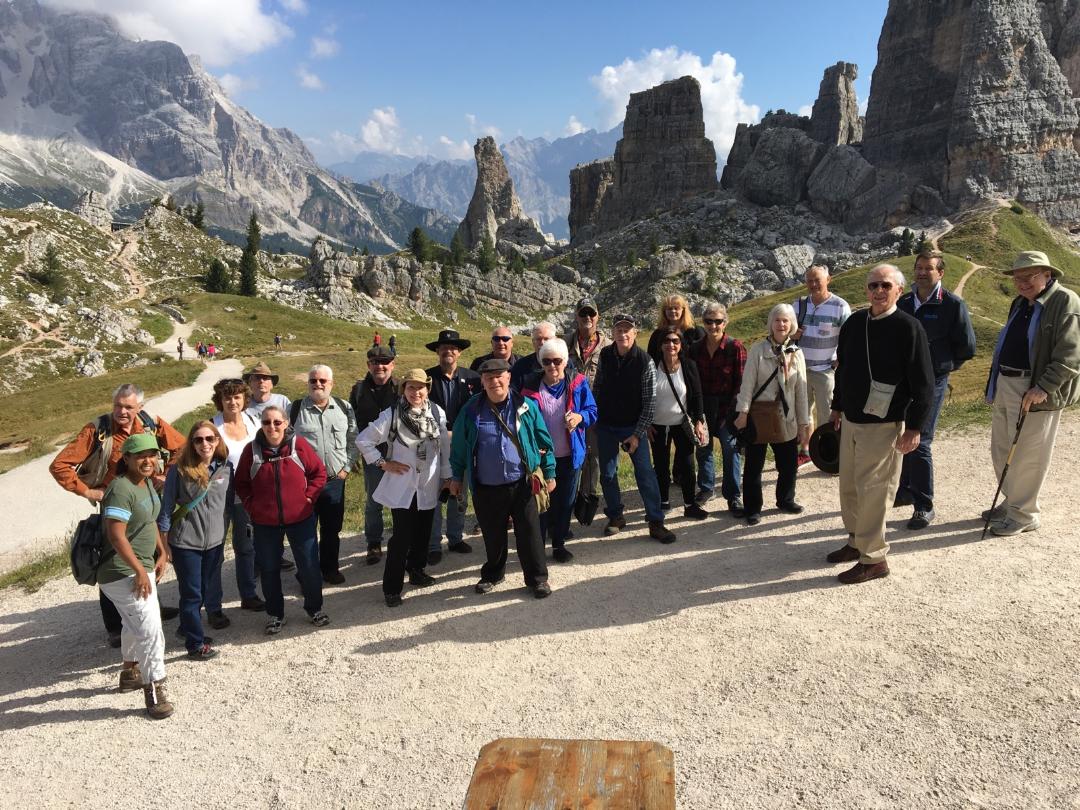
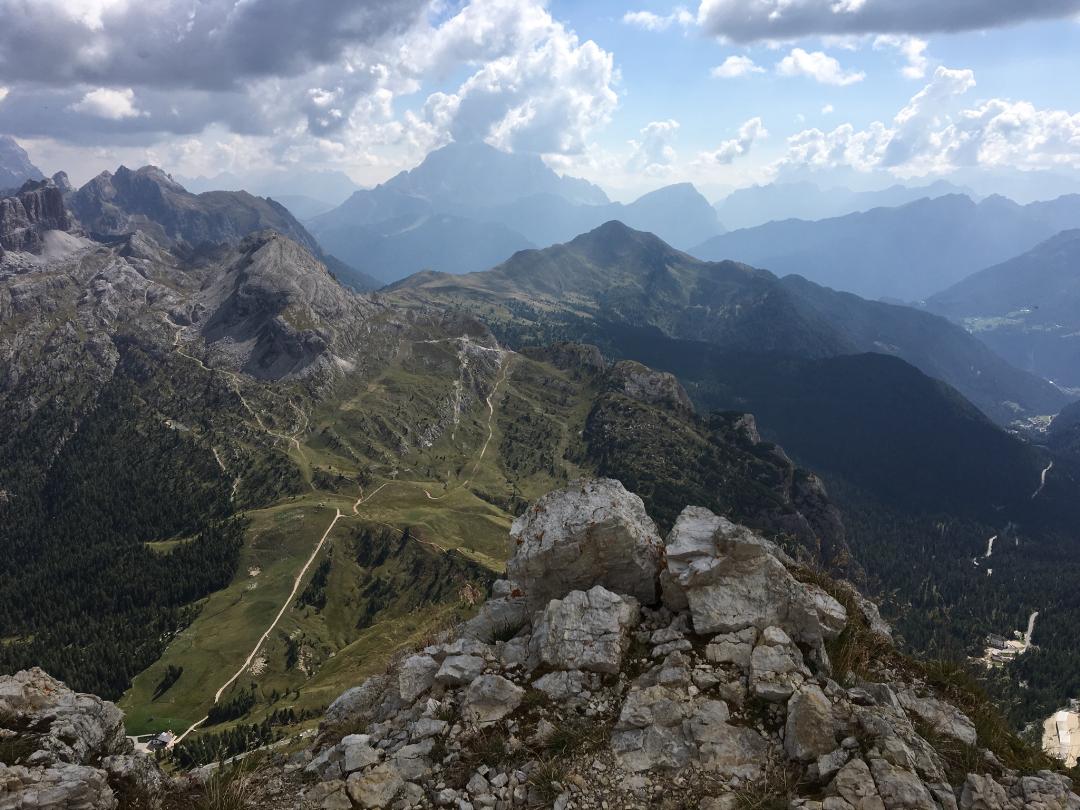
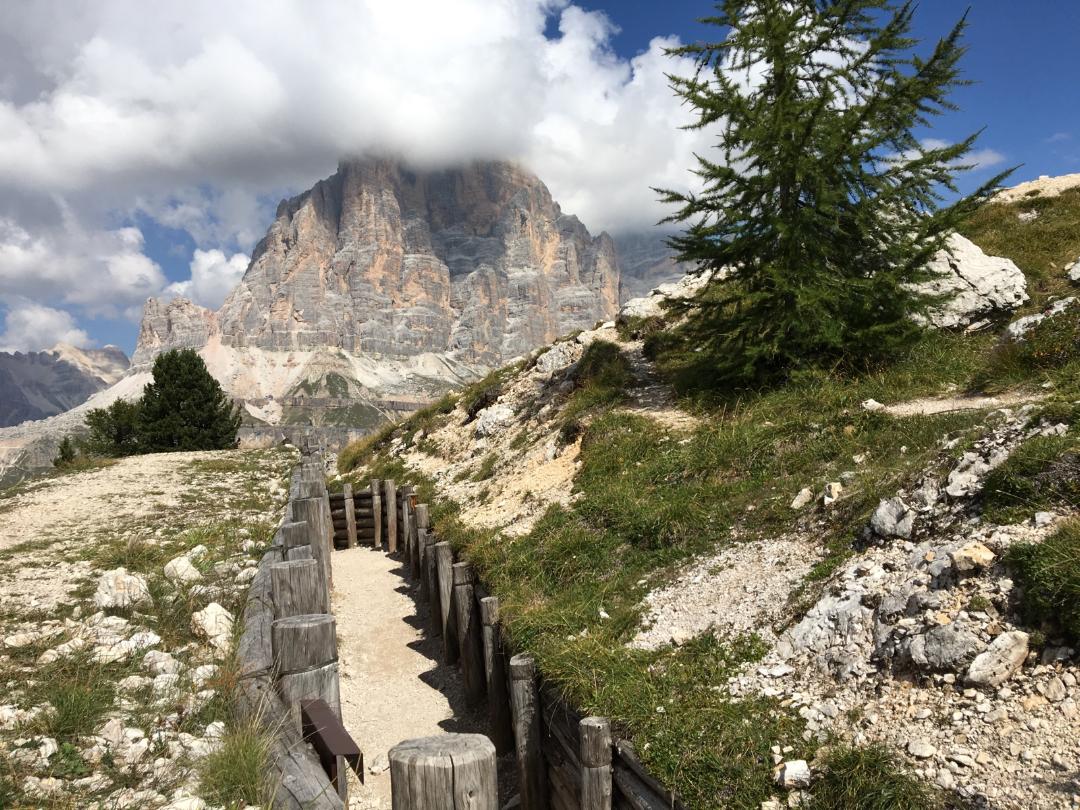
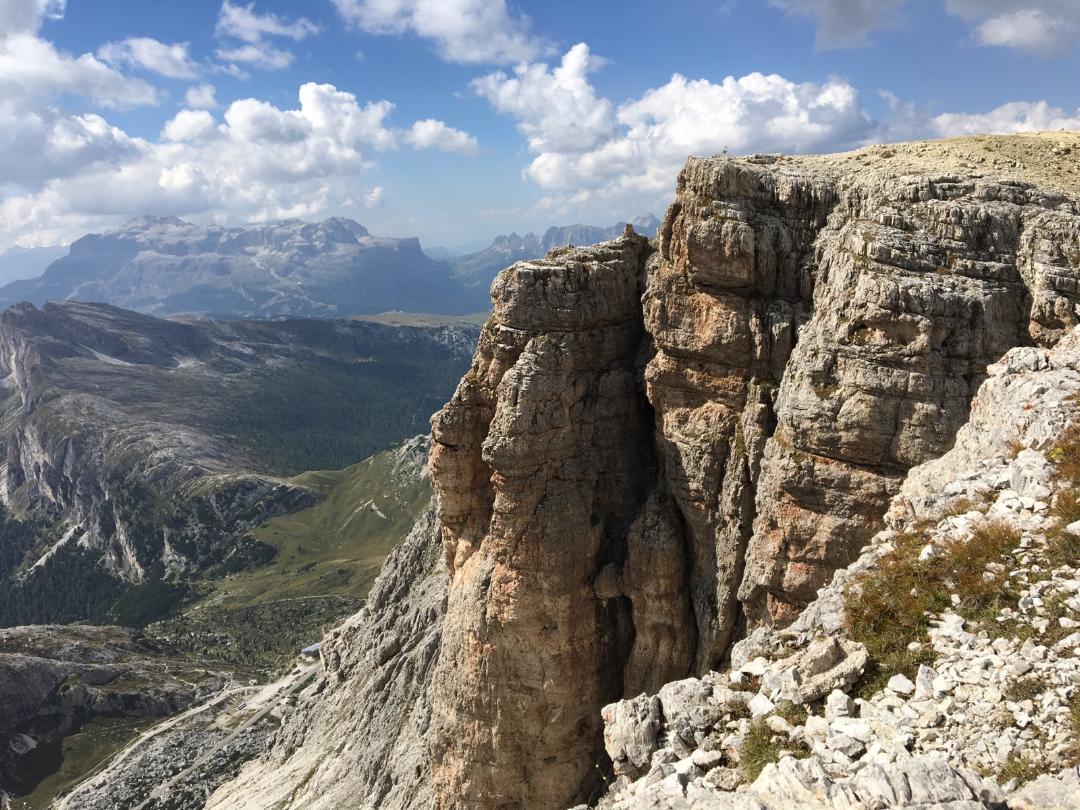
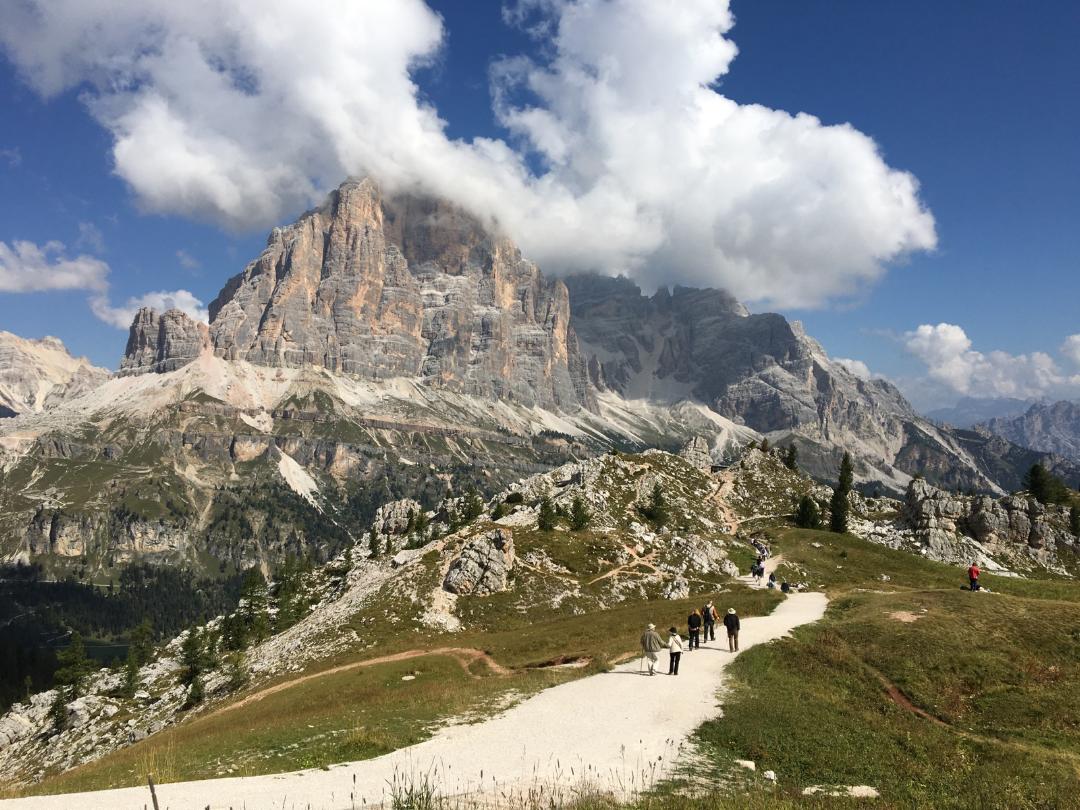
“Fantastico! That was the day and the landscape,” in the words of a beautiful trip mate.
But it is the words of Mike Sheil that best sum up our day:
“Every single thing went up on a man’s back and that included water. This was a hard, hard campaign. Reflect on the nature of the men who fought here. These were not shrinking violets; they were rugged men. This is the nature of mountain warfare – you’re fighting against the environment as much as the enemy.”
Day 6
An early morning means time for breakfast and a stroll around Pieve di Cadore’s town square.
Our last day, we headed through the lovely town of Cortina, past the ski jump from the 1956 Cortina d’Ampezzo Winter Olympics, and arrived at the Sacrario Militare di Pocol greeting by a man with an astonishing resemblance to Mussolini.
In 1914, Cortina residents attempted to remain neutral supporting men fighting for both armies from their village. Originally Sacrario Militare di Pocol was a cemetery for the residents of Cortina regardless of side. As the war continued and the Alpinis arrived, it became a commemoration space with statuary around the grounds reflecting its multifaceted history and the difficult realities of the battlefront: a lovely Saint Mark’s lion (atop a decades younger podium with fascist-era date), bronze plaques illustrating the stations of the cross on the path, 150 mm howitzers and an extraordinary, stark sculpture.
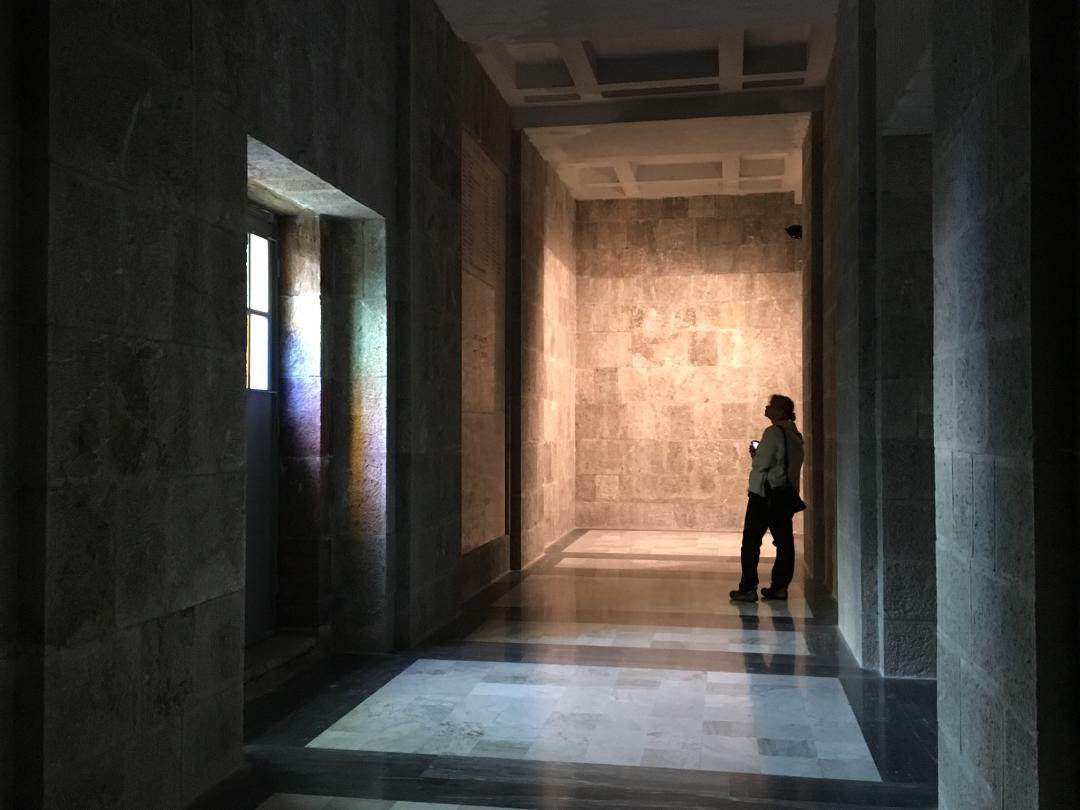
The beautiful lake town of Misurina provided delightful space for relaxed strolls and delicious lunch al fresco. Just outside of town, four-by-fours driven by wizened adrenaline junkies sped up the road and safely deposited us near the top of Monte Piana (2,324 meters/7,624 feet) where over 14,000 soldiers died in one of the highest battlefields of World War I.
As a portion of our group tucked in to the warm wooden chalets of the Bosi Refuge for a beverage, the other half began a breathtakingly beautiful hike up to the summit of Monte Piana to the well-preserved remains of the extended battle between Italians and Austrians-Hungarians where fronts were only about five minutes apart at walking speed. Simply wondrous.

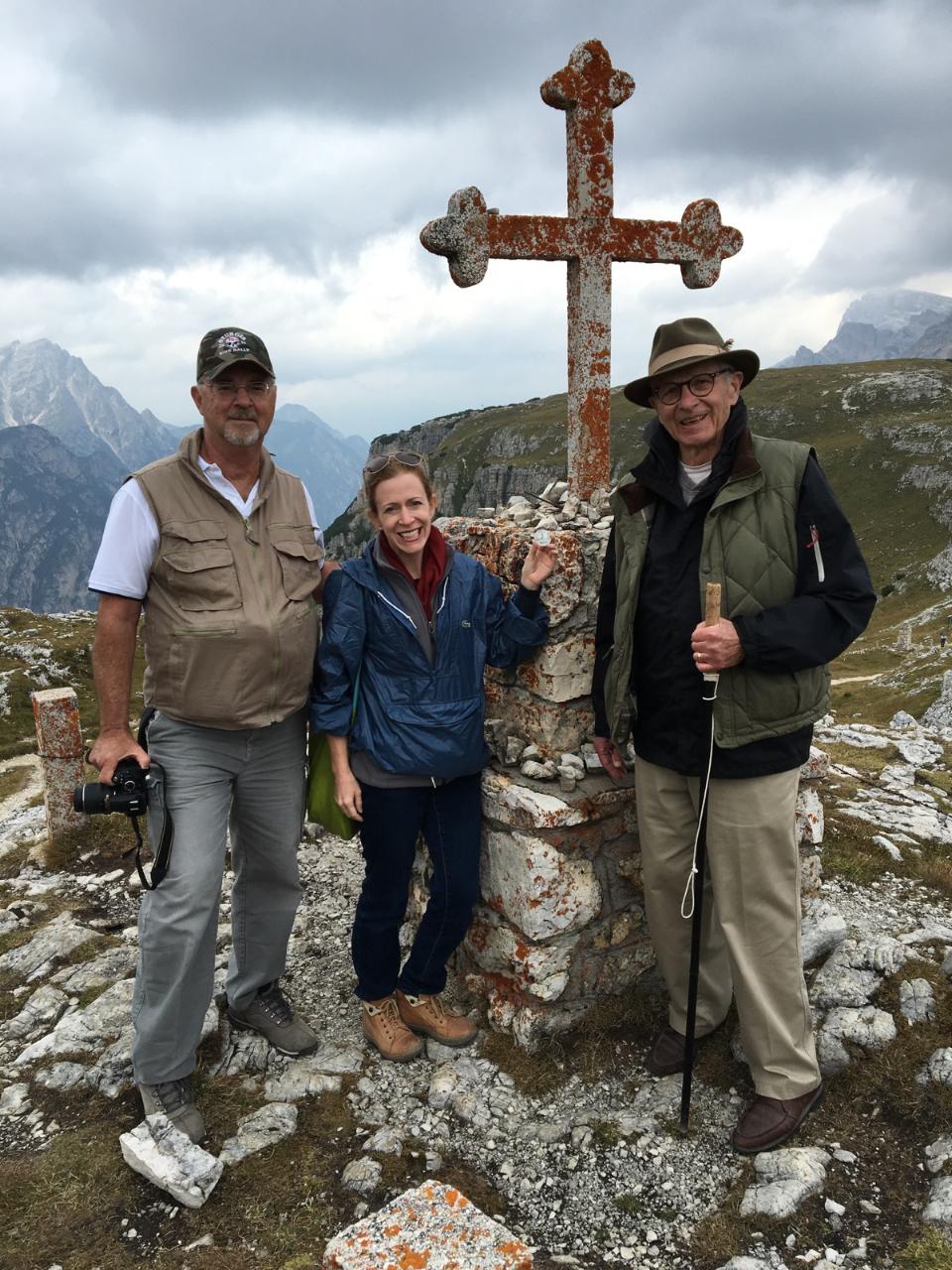
Day 7: Reflections from a bus
Leaving an hour early meant a little less time to savor the apple strudel and Italian coffee at breakfast, but the views while packing up were spectacular.
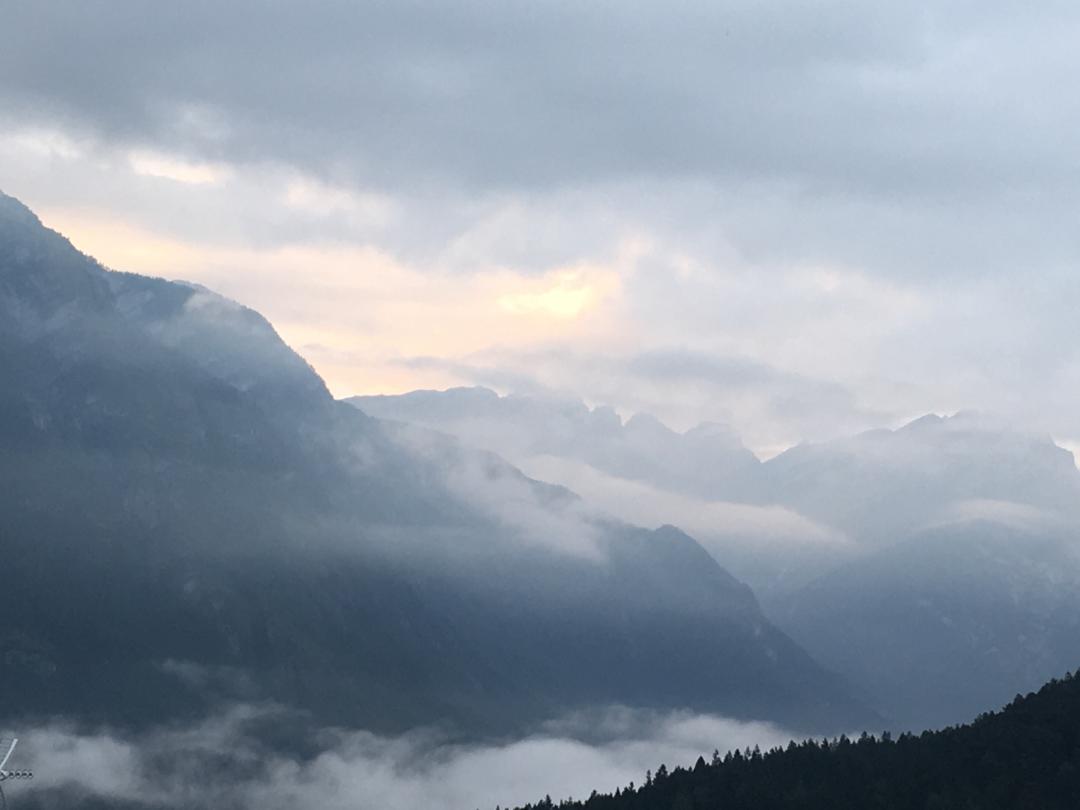
The week has passed quickly with new and old friends filling each day with laughter and shared awe. Over carafes of wine, cups of coffee and Italian food around well-placed tables, we have fuelled days of walking under blue skies of the Southern Front, our conversations filled with brilliant British banter, accompanied by commendable comebacks from our Commonwealth and Continental contingent.
And, being in outstanding company for a few more hours, I’ve asked for their thoughts and to share their favorite moments as we journey back on the autostrada to Venice:
“The British cemeteries and the roses, planted as so that there will always be the shadow of an English rose at some time of the day on each grave marker. I enjoyed listening to the individual stories and knowing that every one of those markers has a story. We will never know those stories.”
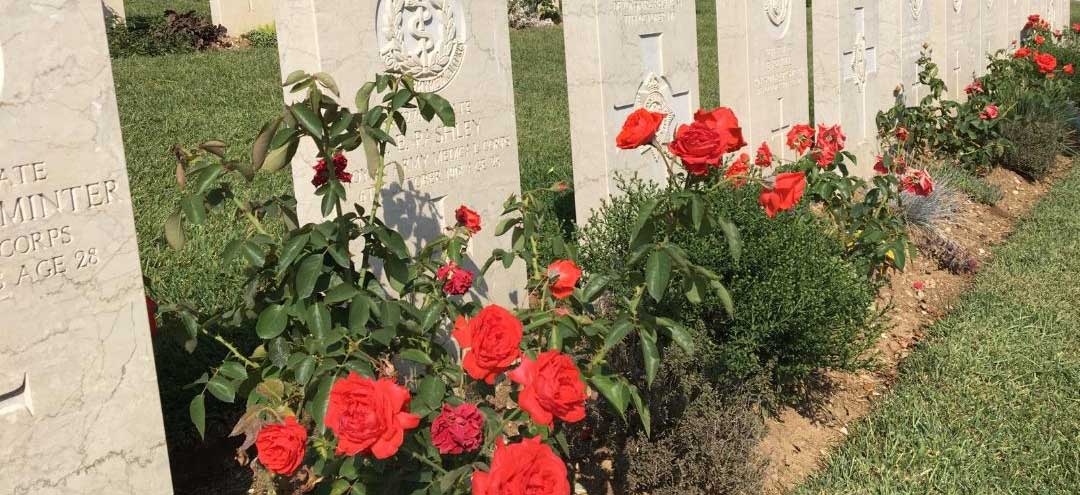
“Seeing and discussing onsite the challenges to be overcome by the young men, volunteers and draftees as well as learning how they supported each other and the heroism of many before they died, all in a sense of duty and love of country.”
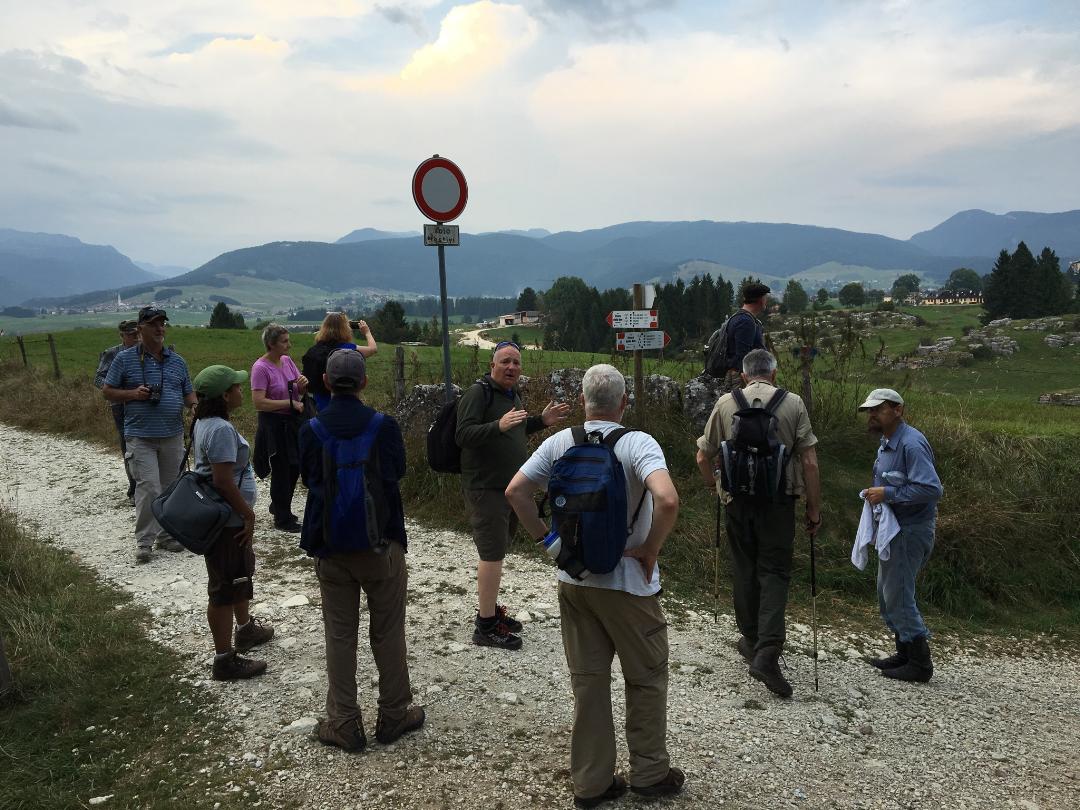
“This is the war that created the world we live in. The connection between Gallipoli and Turkey now charging for naval use of the Dardanelles after 100 years of war reparations has a direct connection to the events occurring in Syria.”
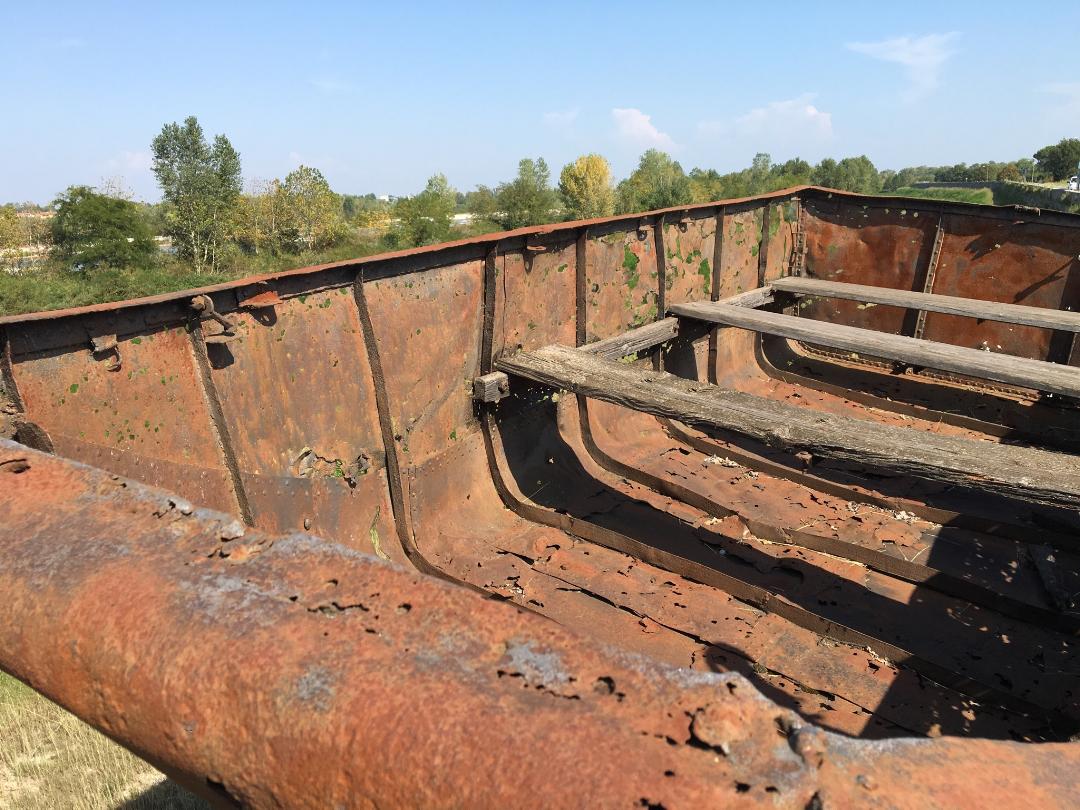
“Poetry and the words of soldiers shared with us in the very places they once had stood as well as the sacrifice made by those in the medical community.”
“The guides and a group that embodied the adventuresome spirit of Ernest Hemingway in his young Italian years.”

“The trenches and being given the opportunity to explore. You got a deep sense of their isolation.”
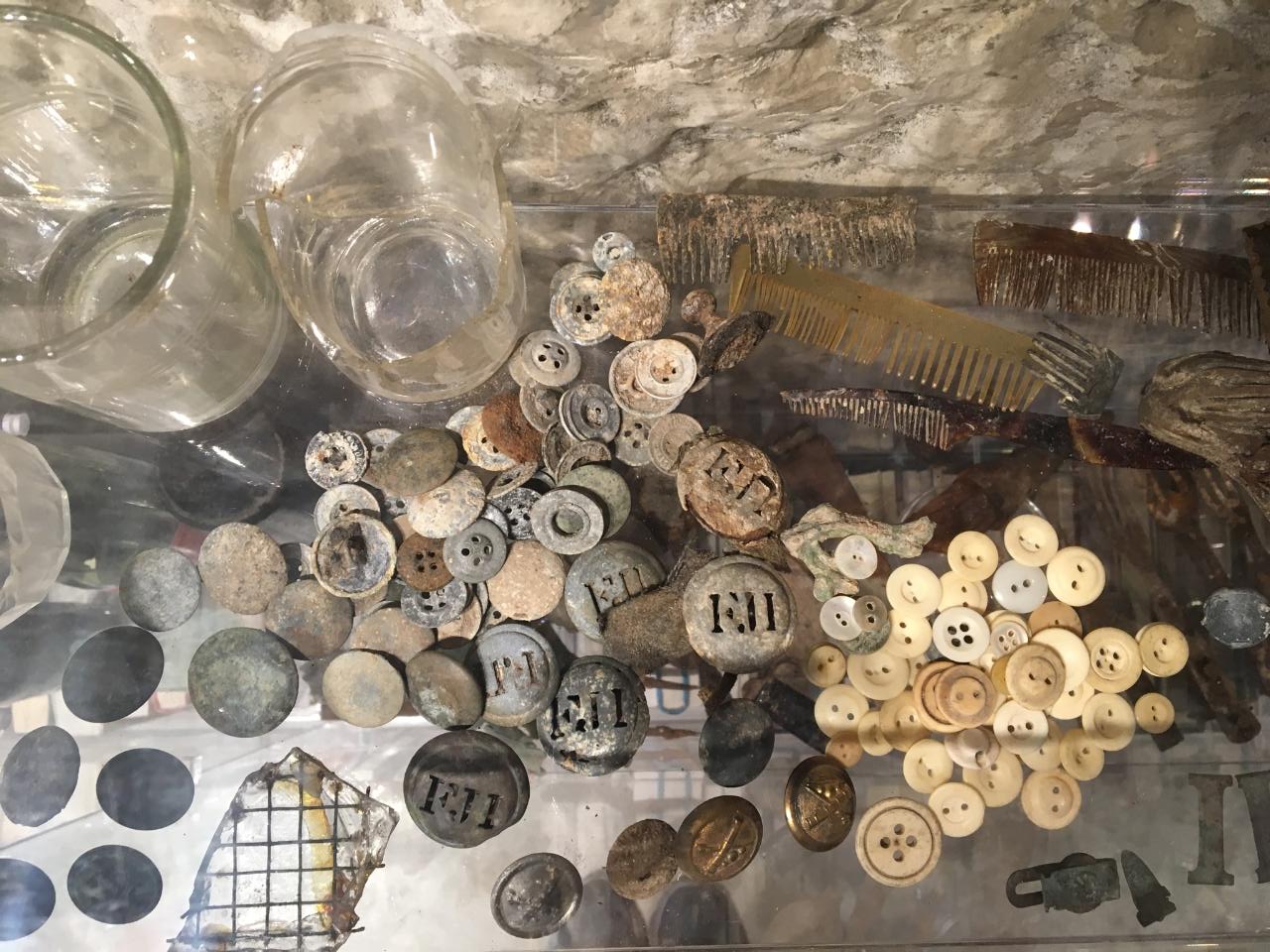
“I’ve read about Italian engineering, but seeing it, you understand how brilliant these guys were.”
“The visit we made to the Tagliamento River, not only because of the actions of the 332nd – but the surprising, personal connections for our group, standing on the exact spot referenced in a writing within the Museum’s archive and how it created an even deeper connection to our understanding and commemoration of the war.”
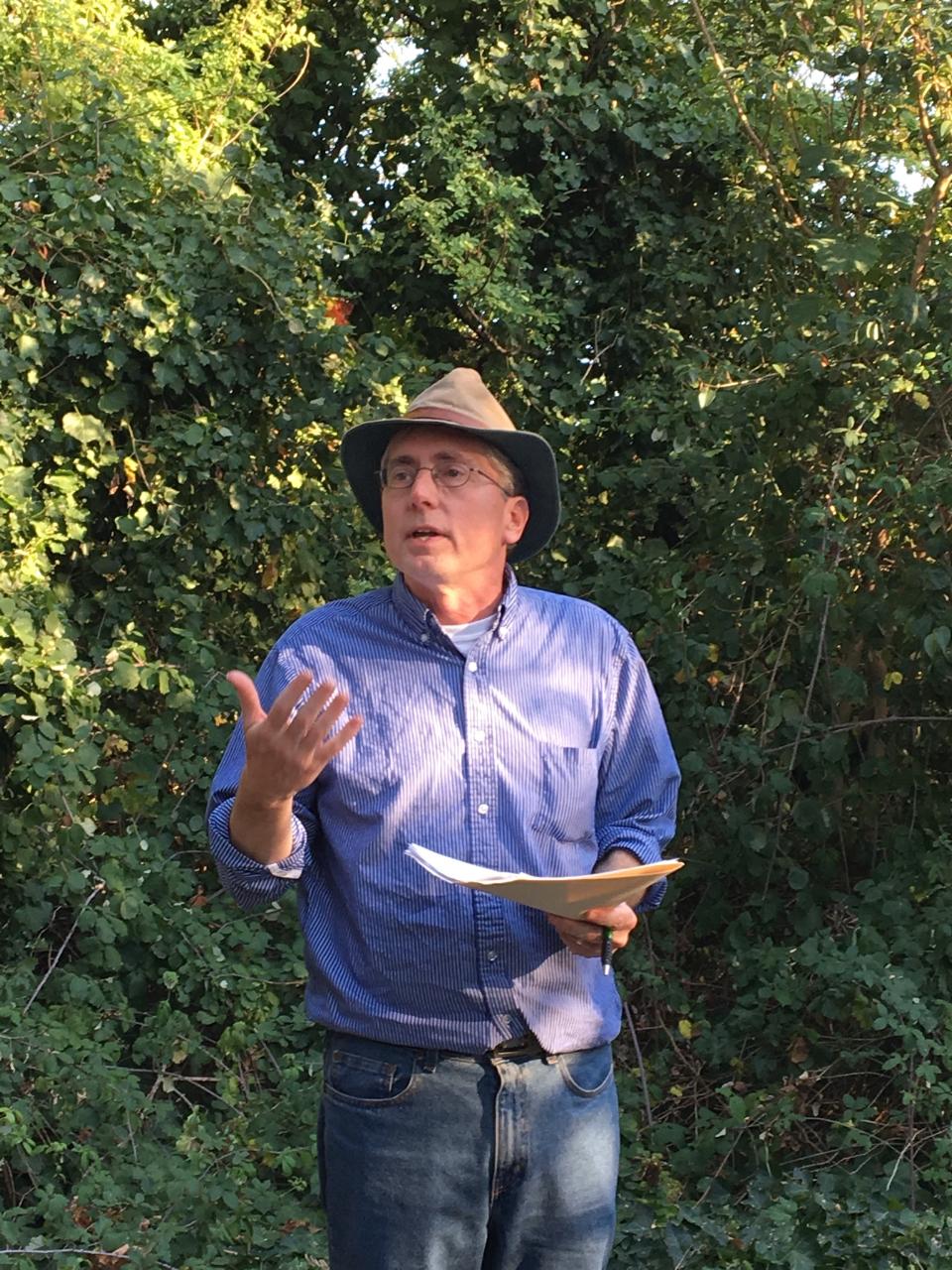
“The alpine scenery and soundscape.”
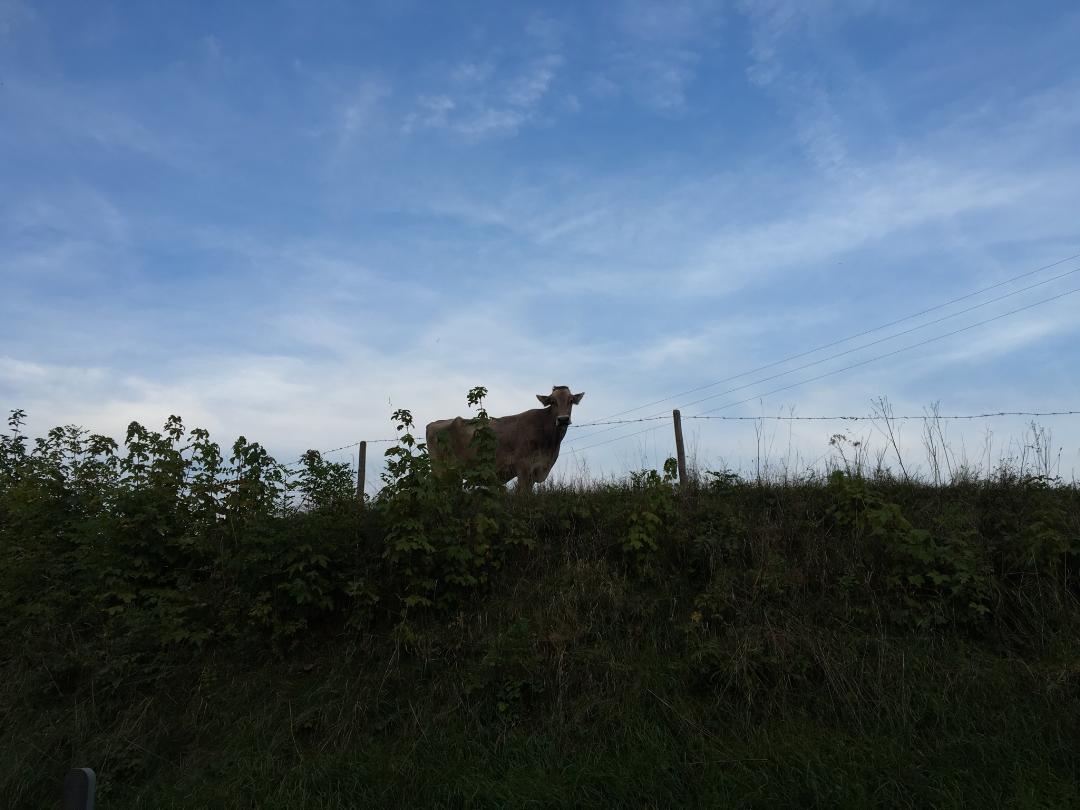
“If you are familiar with the Western Front, you will recognize Italy when you get there. It is the same amazing mixture of courage and ineptitude, the same dramatic combination of violence and heroism and the same wonderful cemeteries and physical sites. And yet, it is totally different. It is totally different because it involves different armies. Just as John Keegan pointed out: every national army is unique to the First World War. So, the multi-nation Austrian army and the multi-linguistic Italian army make their contributions, along with the Brits, Yanks and more...”
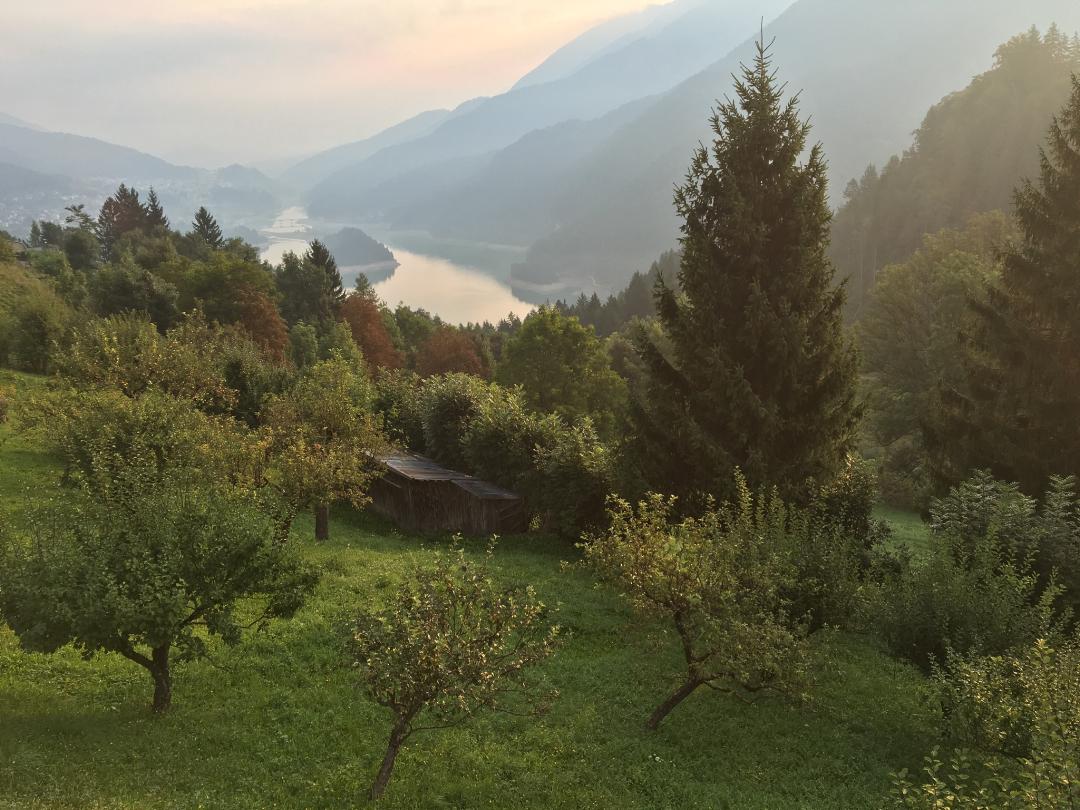
“It is not the success or heroics of men, but the geography that can determine a battle.”
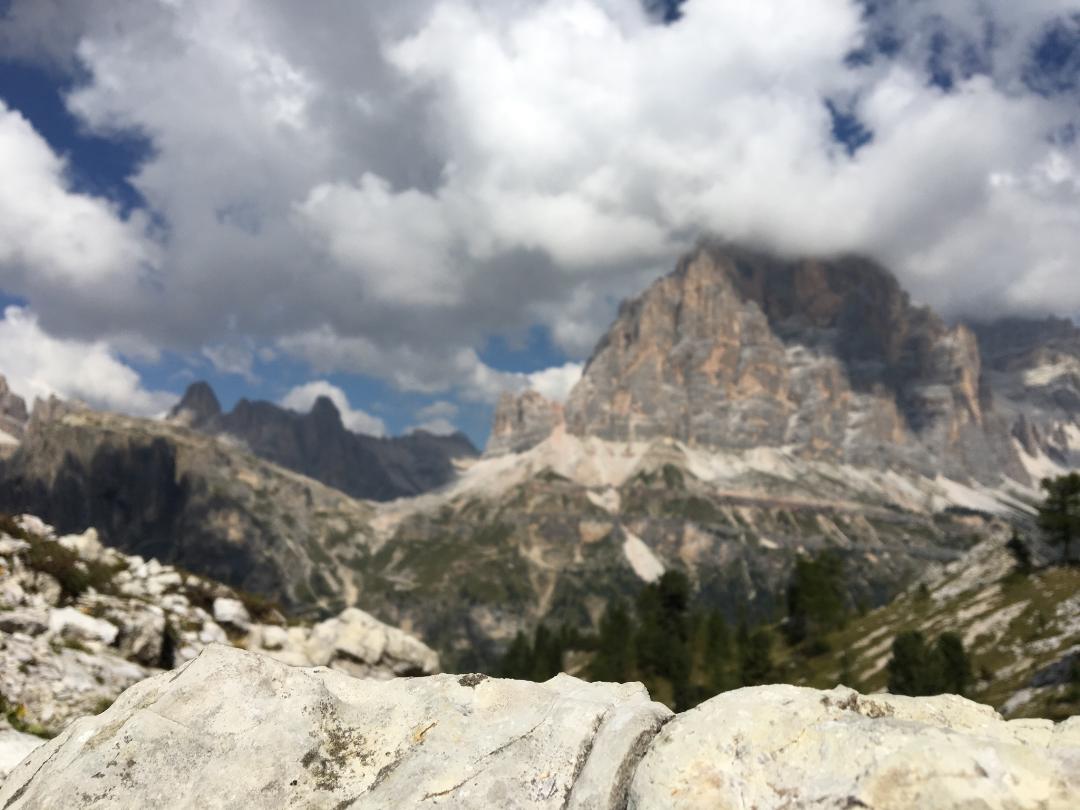
For me, I feel the best last words come from author J.M. Edmonds:
“When you go home, tell them of us and say,
For your tomorrows these gave their today.”
But, as I finish this writing in Venice where we started, as it did back in World War I, the Italian weather clearly wanted to have the final say.
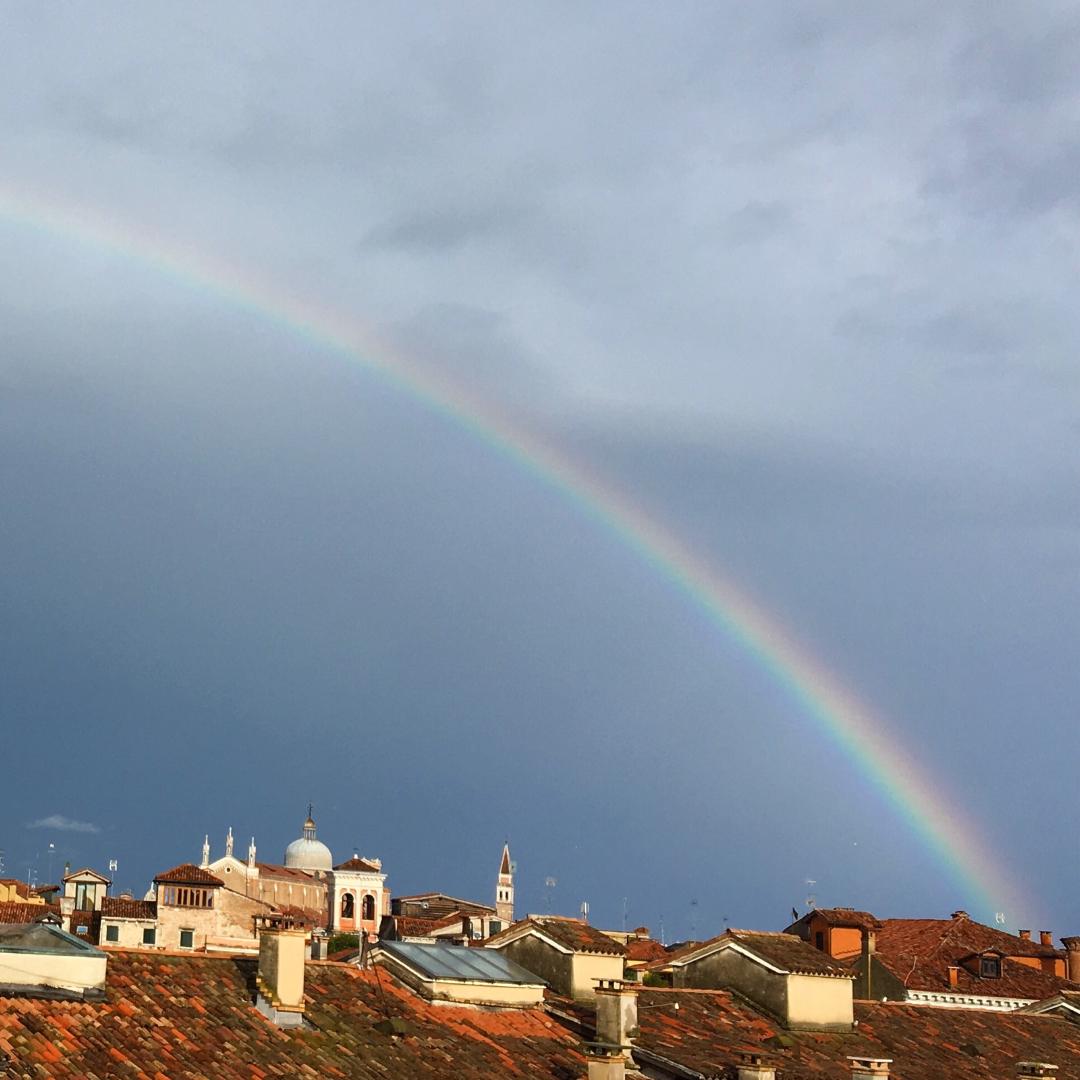
Thank you for reading along with our 2016 Battlefield Tour!
